I AM: The Exhibition
A celebration of global Latter-day Saint
voices through art, music, and dance
Conference Center, June 17-19, 2022
Deseret Book Flagship Store, June 21-30, 2022
Salt Lake City Utah
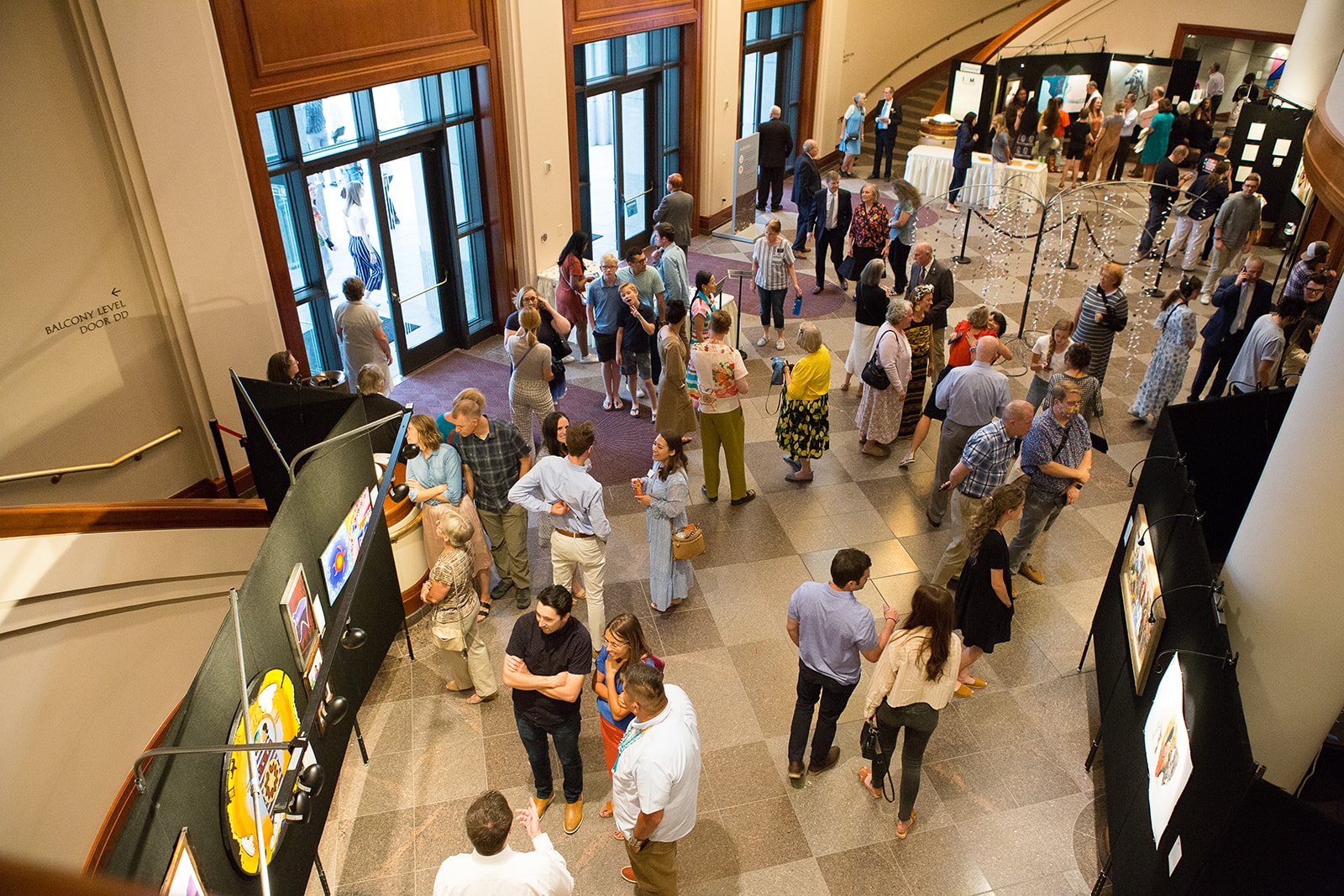

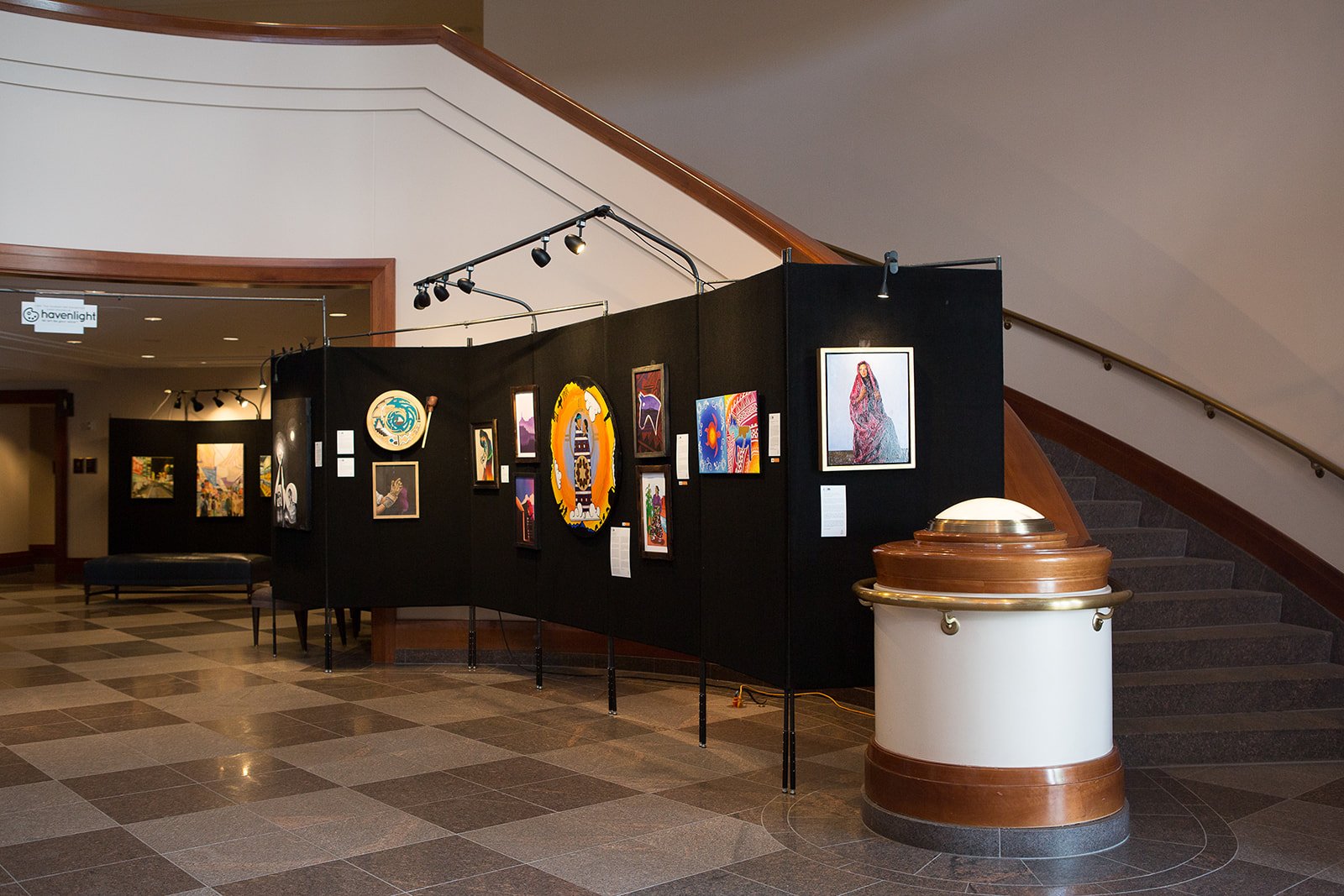
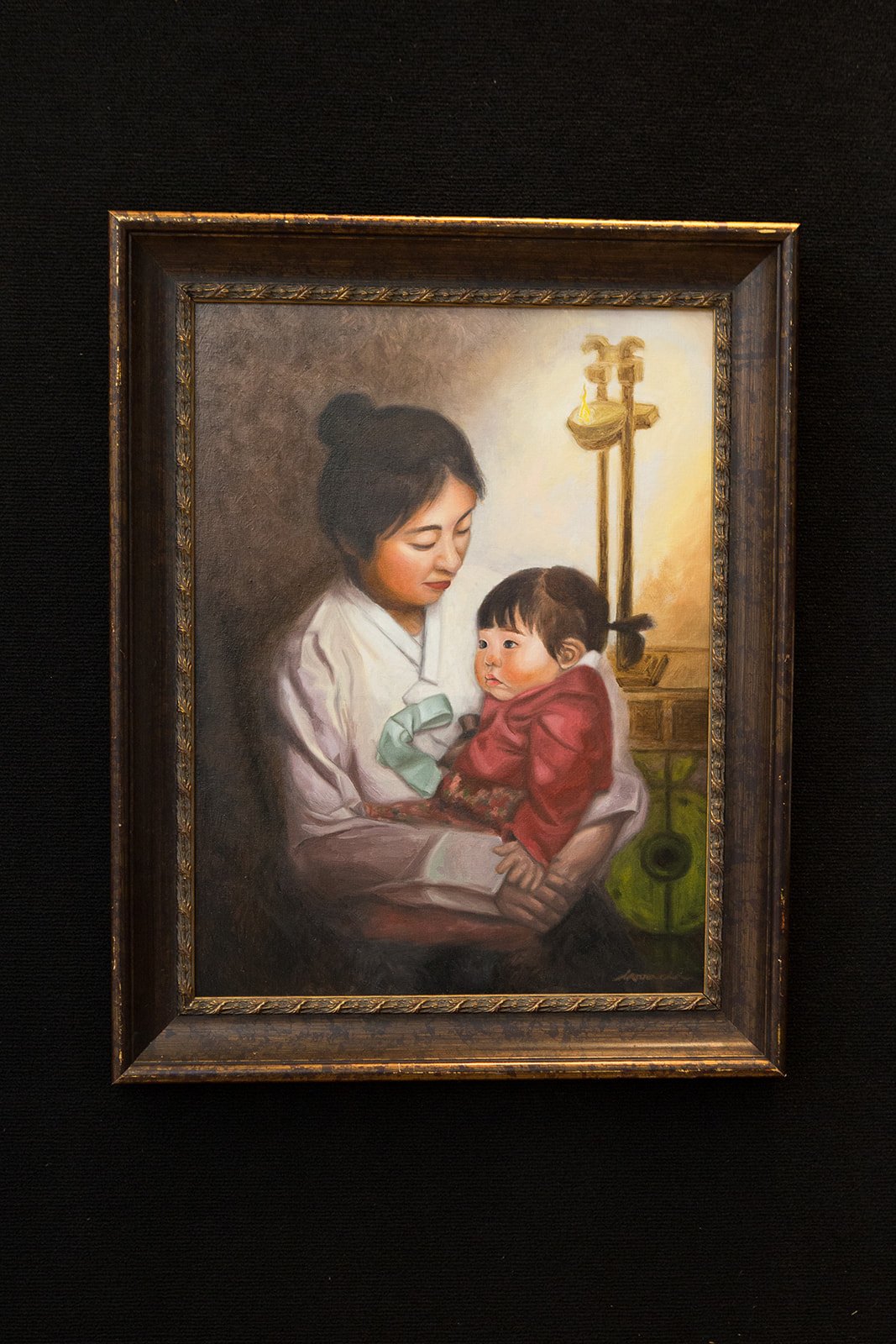
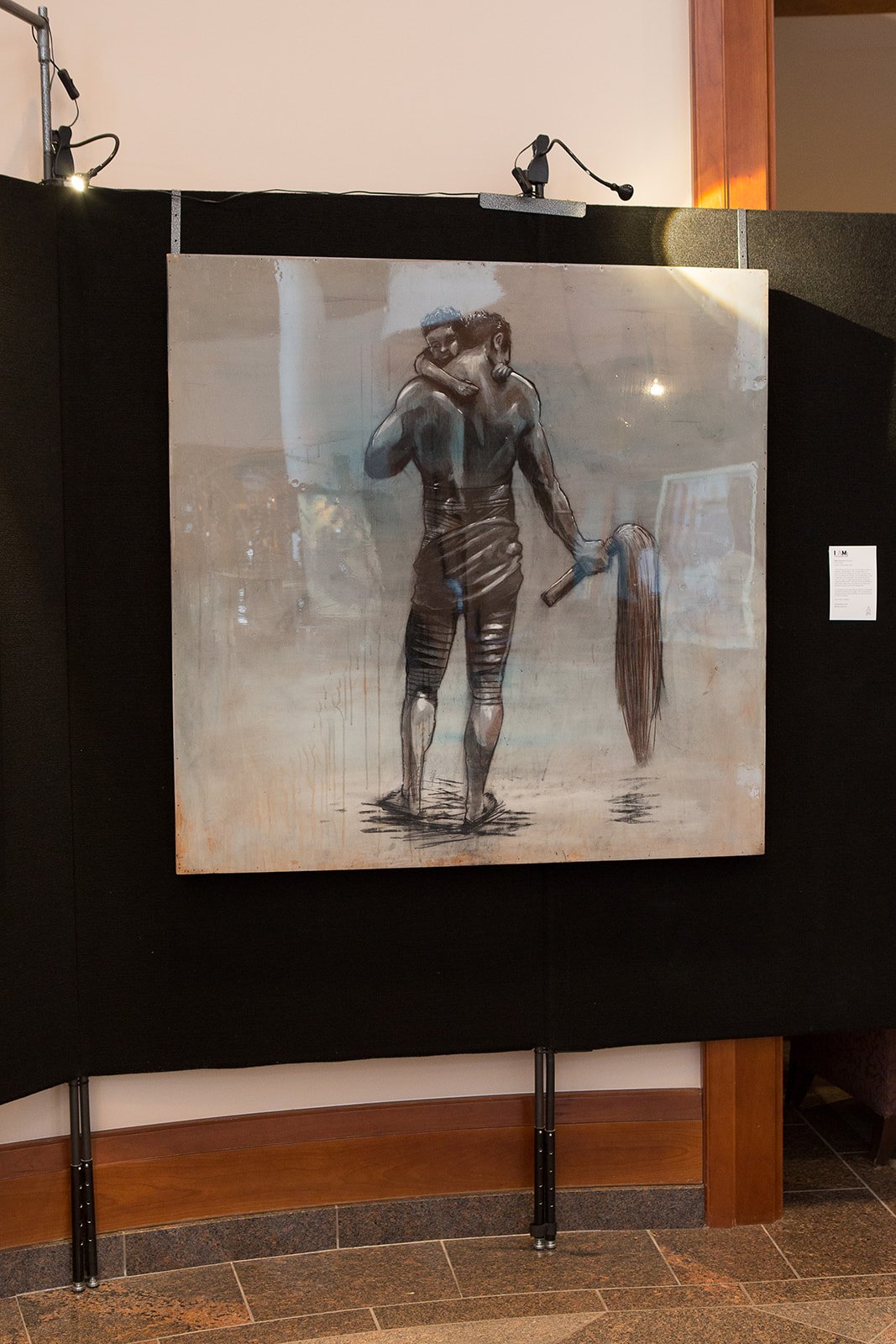

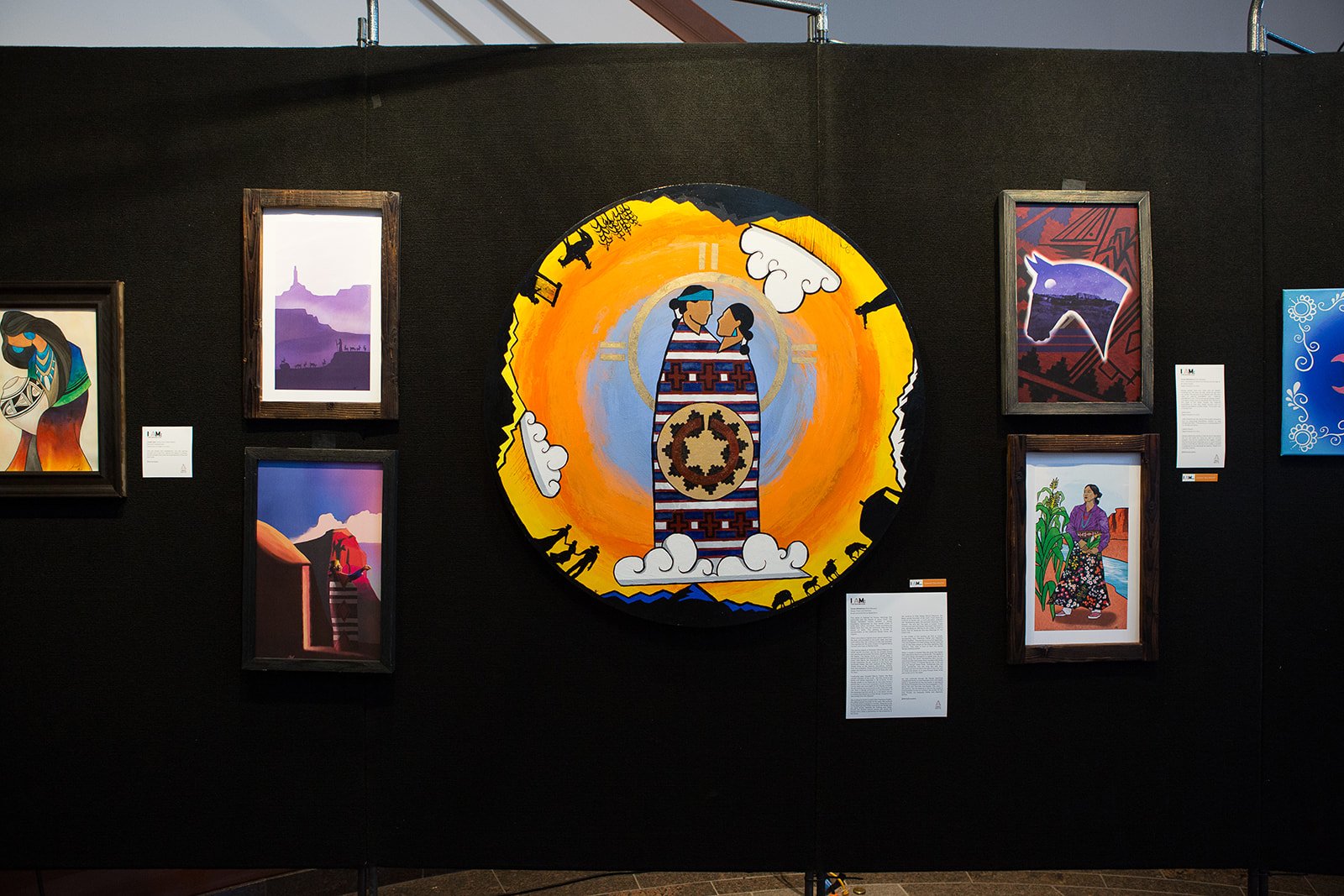
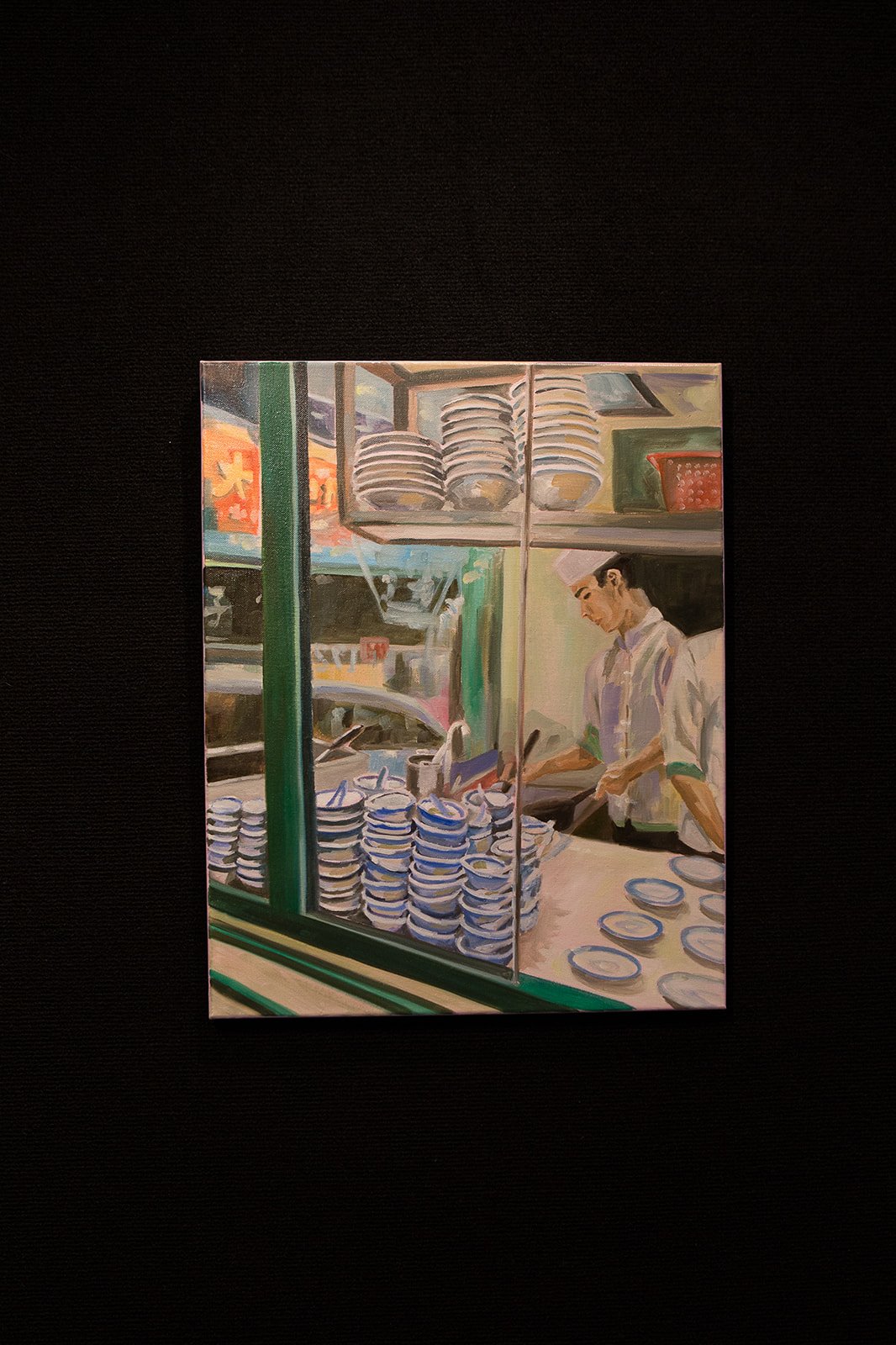
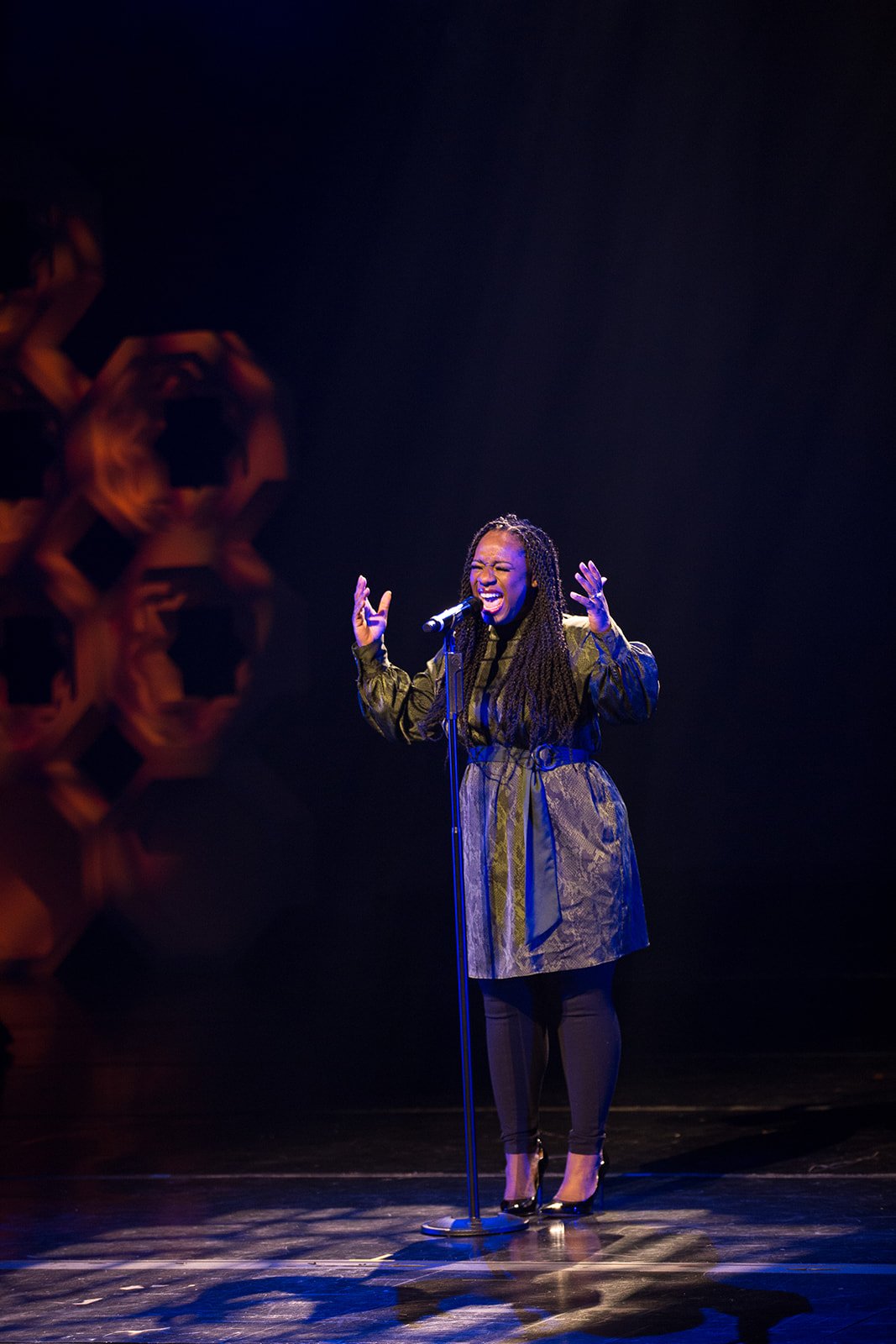
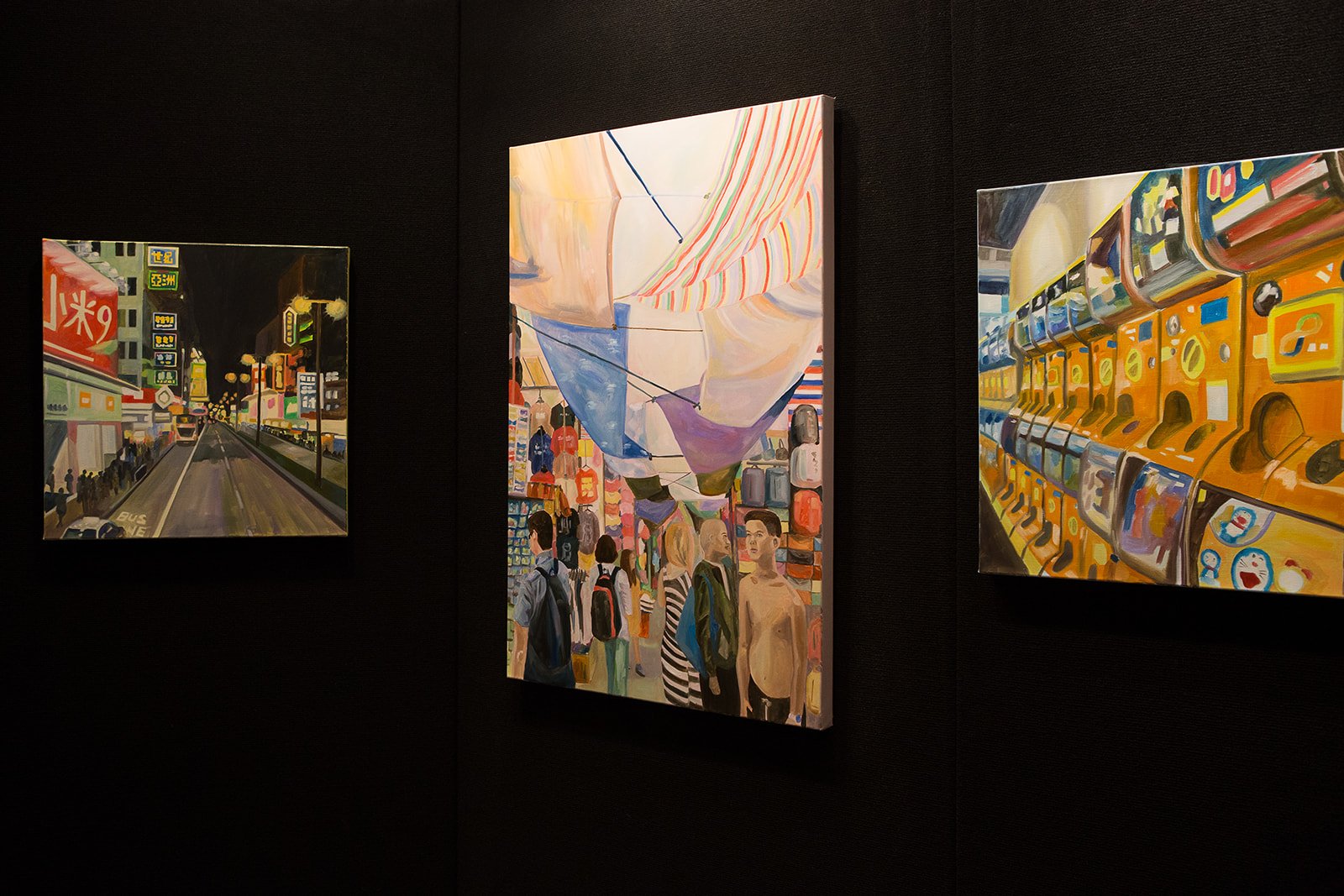

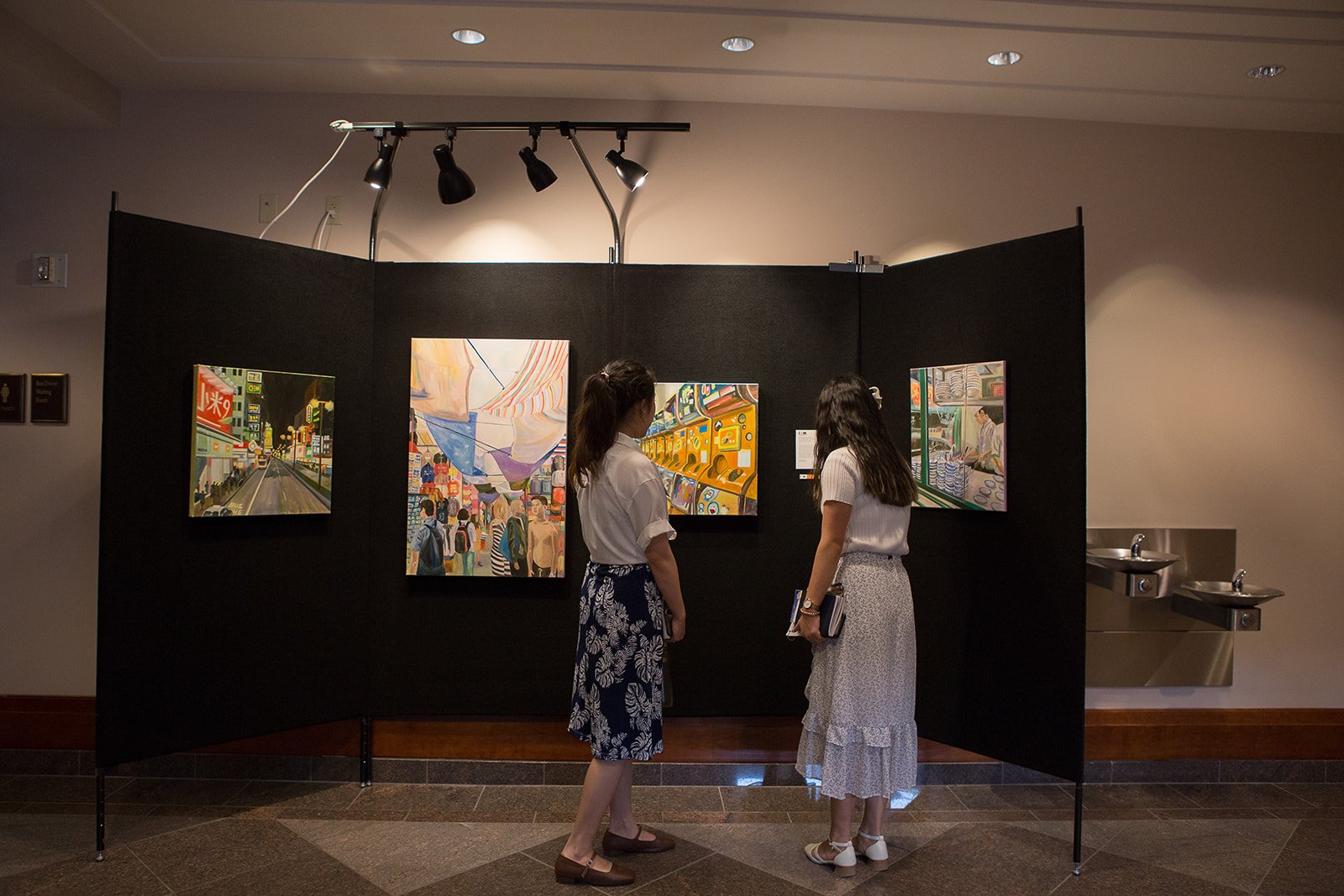



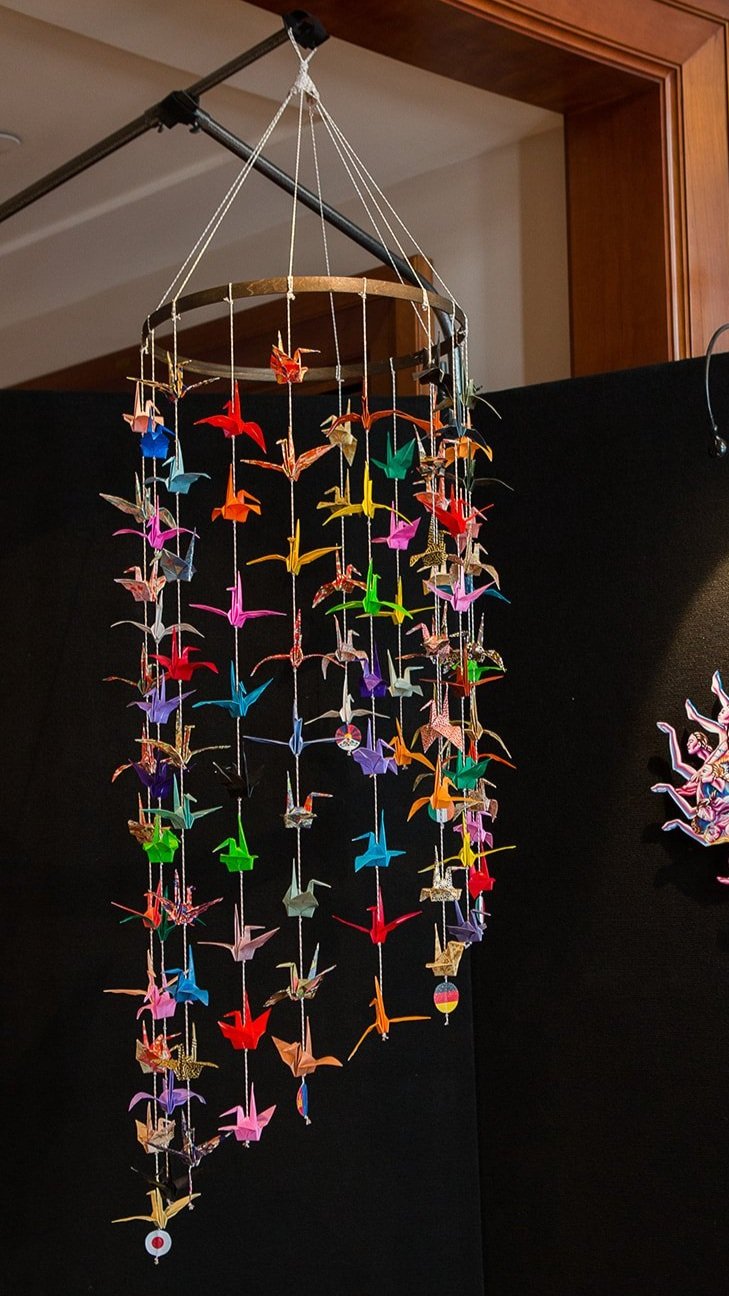
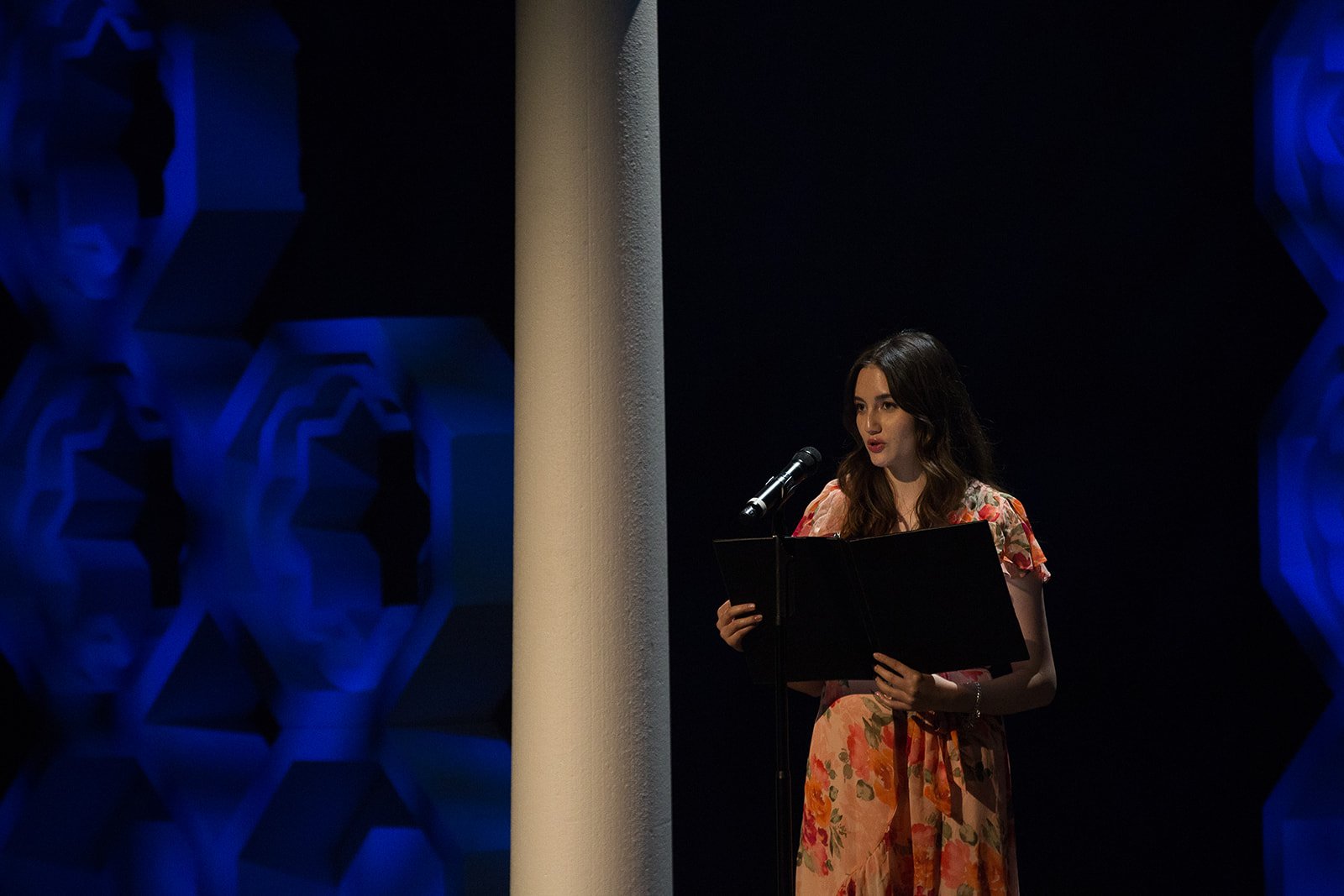
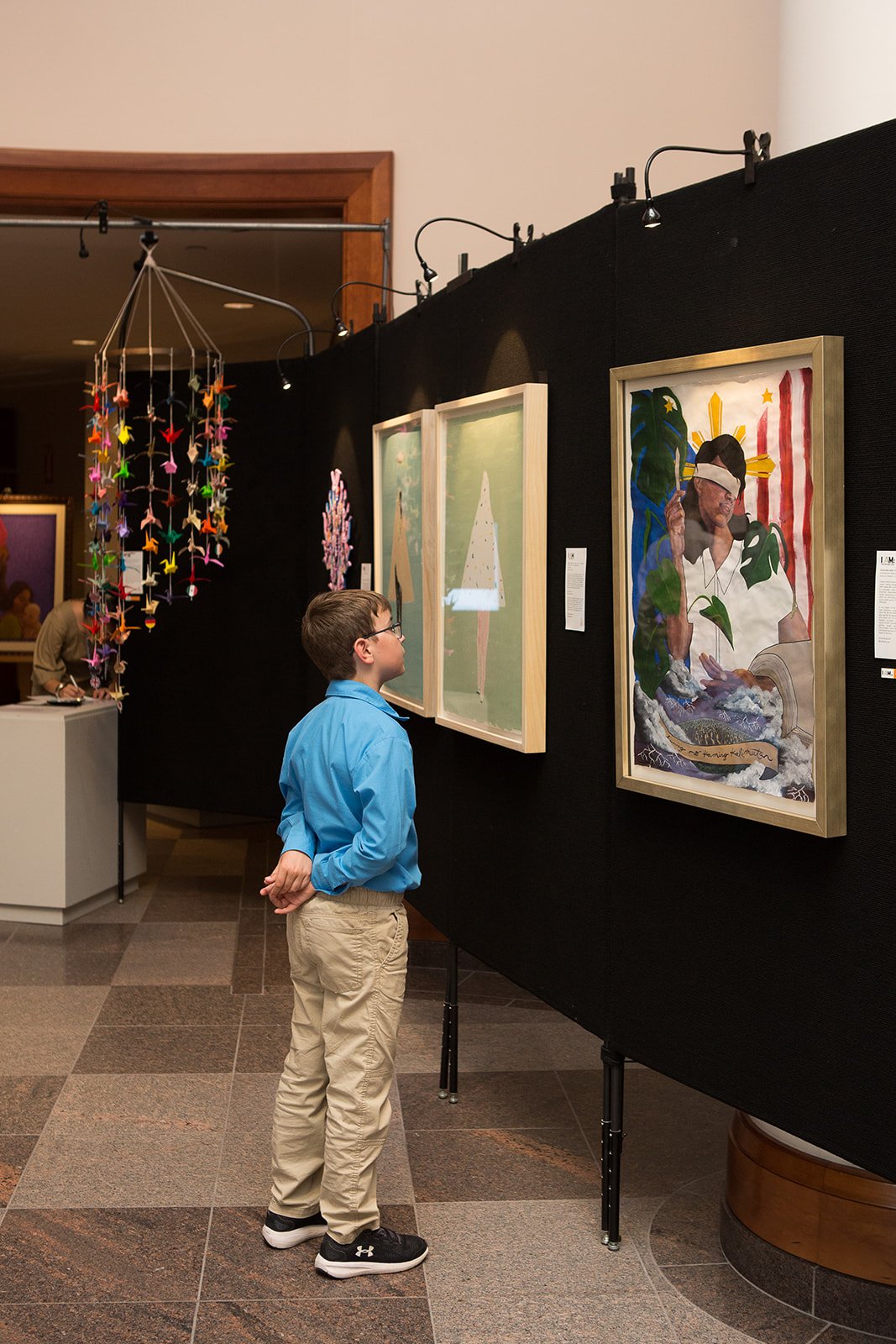
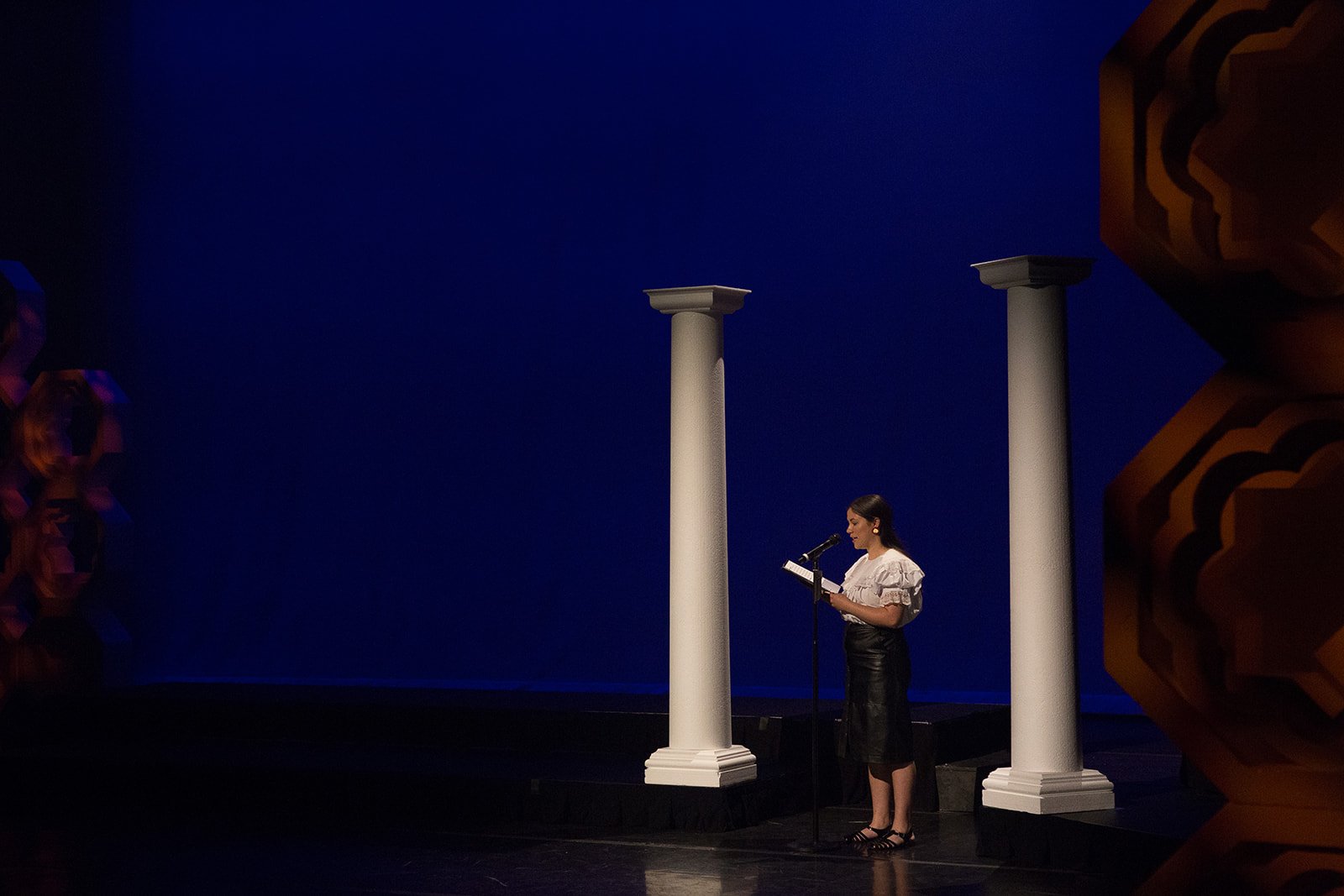
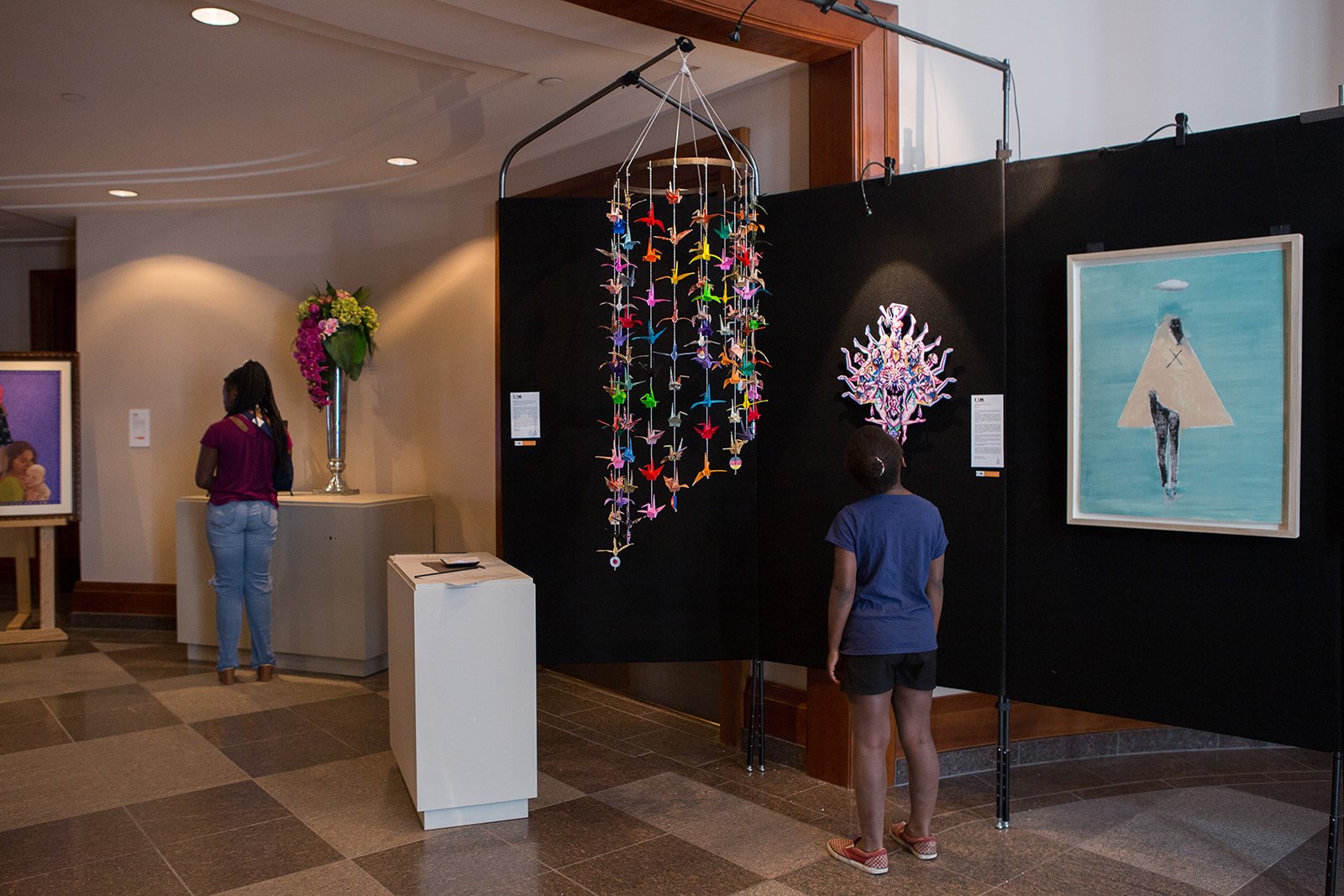
Honoring & Celebrating
I AM: The Exhibition honors where we come from and celebrates who we are to The Great I Am. While on display at the Conference Center and Deseret Book flagship store, it invited viewers to come and see; come and listen; and come and feel the power in gathering through shared arts.
The Center's Race, Diversity & Inclusion Committee were the unwavering visionaries behind 1 AM. The mission of this exhibition, as well as the committee itself, followed the counsel of President Russell M. Nelson to "build bridges of understanding rather than creating walls of segregation." This exhibition will introduce you to the work of diverse artists and creatives whose voices lead out in sincere and broadening conversations.
The I AM Grant Award Winners
In January 2021, Center of Latter-day Saint Arts announced a new program of grants for Black, Indigenous, and People of Color (BIPOC) artists and scholars who self-identified as part of the Latter-day Saint community. Twenty grants were awarded to visual artists, writers, composers, dramatists, and scholars for works that were displayed throughout this exhibition. Together, and alongside other artists of color, their works form the I AM project.
Grant winners in alphabetical order
MILA ARGUETA (Guatemalan)
Women in Color: de Ellas Soy (2021)
Essay
IN CONSIDERING WHO I AM, I thought of those who have given place that I might be. Especially, my thoughts repeatedly returned to those Guatemalan women from whose pains I grew, from whose roots I could flourish. I considered roots and their significance to the life of the tree. Roots, essential to the body for strength and nutrients, must live in obscurity and darkness so that the branches may live in and breathe light.
Despite their “poor spot in the vineyard,” my roots grew deep and strong because in many cases, like roots, their only thought and opportunity was: we must survive and we must ensure that our children survive. However, amidst their persistent push for survival, some of its body broke the surface and tasted light. My father, with their strength, found the gospel, a promised land, and knowledge that allowed me as the branch to gain the light of truth, education, equality, and the dream to flourish amidst the work of surviving.
Pictured below: Mila Argueta reading an excerpt from her work, Women in Color: de Ellas Soy, at I AM: The Journey in June, 2022.
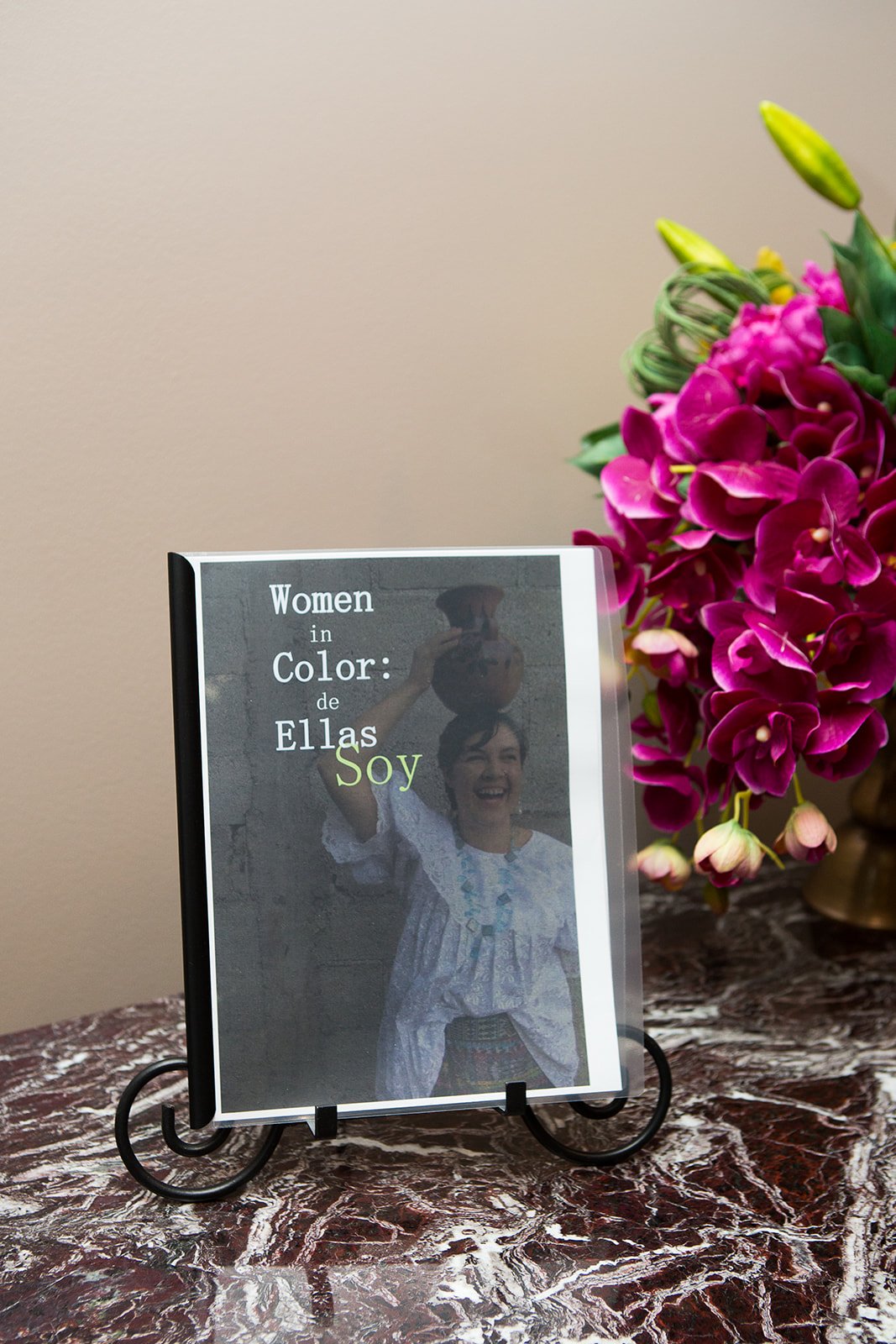

JANE BAHR (Japanese-Asian-Tibetan Chinese-Inuit)
The Beauty of Being Multiracial: My Experiences as an Asian American and How It Has Blessed My Life (Essay, 2021)
Origami Sculpture 68 x 18 x 18 in.
THIS WORK COMES IN TWO PARTS. The first is an essay exploring the artist's personal experiences growing up part Asian in America and how her heritage has influenced her testimony of Jesus Christ. Accompanying the essay is a sculpture made of thirteen strings of origami cranes arranged in a circle. The circle represents eternal families and cultural unity. In Japan, the origami crane is a symbol of peace, hope and healing. Six strings of cranes are made of solid colored paper, paying homage to the bundles of multicolored cranes hung at Buddhist temples. The other seven strings are each done with the colors of a different world flag and reflect parts of the artist's mixed heritage. (Included and in order are strings representing Tibet, Ireland, Mexico, Germany, Mongolia, the United Kingdom, and Japan.) Every crane is unique and was hand folded, strung, and specially coated for protection.
Pictured below: Jane Bahr’s work hanging in the exhibition at the Salt Lake Conference Center in June, 2022, and Jane reading an excerpt of her essay at I AM: The Journey.



MADISON BECKSTRAND
Poem Series (2021)
Ode to My Mother’s Swearing
Colorblind Rage
Yours
Help Me
Talents
Branches
Teach Me Guide Me
Wishes
Human
Worth
Big Brother
MADISON BECKSTRAND IS A black, transracial adoptee who was born and raised in the Church of Jesus Christ of Latter-day Saints. She was raised in the Utah Valley and has loved writing for her entire life. She is a graduate of UVU, received Judge's choice in the Mormon Lit Blitz, and is utterly over the moon to be presenting some of her work to more people. Each of Madison's poems is born from different facets of her story, and she hopes you get to know her more from them.
Madison Beckstrand reading her poem, “Branches,” at I AM: The Journey in Salt Lake City in June, 2022.
ROSE DATOC DALL (Filipina-American)
I Was, I Am
Oil, Acrylic and Plaster on Board 48 x 30 in.
“ I WAS, I AM” IS A SELF-PORTRAIT that reflects my experience being both a woman of color, a Filipina American, growing up in the 1970s in America, and then becoming a Latter-day Saint. The piece expresses an emergence and healing from what is referred to as the colonial mentality, which is the psychological legacy of a colonized people, passed down from generation to generation; it is a distorted view of one’s ethnicity shaped by western-bias. Growing up in a mostly-white suburb in Virginia, I remember feelings of inferiority, self-loathing and automatic shame simply for not looking like everyone else. I remember being overlooked in school and local plays for lead roles, and never seeing Filipinos represented in media or popular culture. Nevertheless, I tried to fit in. And yet I felt like a Filipino imposter because I could not speak Ilocano nor Tagalog, which was not taught at home in favor of English (the other native language of Filipinos). Many Filipino Americans like me have lost their a native tongue, which is a casualty of trying to fit into American society. The text covering the left of the piece expresses these inner thoughts and the external forces that shaped this mentality which is still prevalent amongst many Filipino Americans today.
Furthermore, the flow of the piece moves from left to right, moving from the darkness of the colonial mentality to light and knowledge of the Gospel of Jesus Christ. The text covering the right of the piece, in contrast to the left, are verses of truth and light from scriptures and hymns as well as words and phrases of positivity. I make reference to my baptism (at the age of 19) in the conceptualization of this painting. In fact, if one were to turn the piece on its side, my figure emerges from the water, being pulled into the light and fresh air by the hand of the Lord. The piece reflects the death of my former self, former ways of thought, in which there is a literal break in the painting, and the emergence of a new self with new knowledge. In short, it was only after learning the Gospel that I learned a more healthy view of myself as a child of God, of equal worth to others, and equally loved by Heavenly parents. It was a huge paradigm shift which set me on the road to healing, decolonizing, and deprogramming over time from a distorted view of self. —Rose Datoc Dall
I Was, I Am (2022). Rose Datoc Dall
GINGER DALL EGBERT (Filipina-American)
Made in Her Likeness (2022)
Metal Leaf & Pigments, Oil & Acrylic on woodl 27 x 45 in.
THIS TREE IS MY SYMBOLIC DEPICTION of our Mother Eve. The concept arose from observing the controversy over how to portray race in religious artwork. For about two thousand years, Western nations have been the main providers of Christian artwork. Understandably, the majority of these Western artists used Caucasian models for their religious subjects simply because of who the artists had access to, as well as their limited exposure to global cultures.
However, this usage established a pattern that continues today, with most Divine Figures in Christianity still being portrayed as Caucasian. While this imagery is well-intentioned, it may also equate "whiteness" with "divinity", which disheartens and alienates believers who are not Caucasian.
Such imagery also exposes assumptions about "original race". For example, some may feel offended when it's suggested that individuals like Adam & Eve & God look different than their own ethnicity.
We all want to see ourselves in the Divine.
This painting shares my mixed-race perspective of how we can see ourselves in Mother Eve regardless of what She looked like. I have seen firsthand how genetic traits change quickly from generation to generation–– my skin looks different than my own mother's, but I still see myself in her. If Mother Eve is the progenitor of all races, then the seeds of all traits can be found in Her. We are all made in Her likeness, just as we are created in God's likeness (see Genesis 1:26-27).
In this symbolic depiction, all skin tones are included & celebrated, interwoven with heavenly shades of gold that further reflect the divine soul.
@ginger.dall.egbert
Made In Her Likeness (2022), Ginger Dall Egbert
JAMES GOLDBERG (Sikh-Jewish)
Power in Hair (2021)
Essay
I FIRST TRIED TO GROW A BEARD when I was in third grade. Somehow I got the idea that if I let my sideburns grow out, hair would grow underneath until I had a beard as long as Bachittar uncle’s or Bapuji’s.
I am still that little kid inside, because I am still the descendant of Sikhs who saw uncut hair as a symbol of faith and identity and love. That’s hard for some people in the church I love to understand. Many leaders grew up thinking of short hair as the respectable, responsible choice for men, and that preference became policy. To this day, we as a people are often hard on Black locs or Native braids or Punjabi beards.
I wrote a long essay about long hair for this celebration because it raises questions that matter to the Latter-day Saint future. We want to be a global faith—a body of Christ that spans continents and cultures. But what assumptions are we willing to question along the way?—James Goldberg
patreon.com/jamesgoldberg
James Goldberg reads his personal statement about his essay, “Power in Hair,” at I AM: The Journey in Salt Lake City, 2022.
SABRINA HORAK (Japanese-Austrian)
Jing (2021)
18 x 20 in.
AT THE CENTER OF MY ART MAKING has always been my urge to manifest my bi-racial heritage in physical Artworks.
In this series I am merging influences from Japanese mandalas with a western approach of portraying the human body. I am depicting a Paradise that is composed of bodies of sunbathing people. Having been born and raised in a country with long winters my image of Paradise I connected to the image of summer.
My interest in the concept of Paradise comes from an idealized image of Japan I had as a child in Austria where I grew up an Austrian father and Japanese mother. Having visited Japan as a child without being able to speak the language and thus feeling like a tourist in a wonderland, I always had a glorifying image of Japan.
I know that this is far from reality, but this dream-like image has always been a big source of inspiration for my Artworks.
Paradise can exist for a short time, and can also be a state of mind, a memory, or even just a short moment, not just a certain location.
And I think that everybody has a longing for a perfect, Paradise-like Place.
I have always experienced life as a minority- in regards of racial background, religious beliefs, and choice of career. There might not be an answer to the question of where I could fit in, but I believe that my Art is a visually appealing way of asking that question.
@only_sabrina_horak
Jing (2021), Sabrina Horak
VICTORIA-RIZA HYDE (Filipina-American)
A Portrait of a Filipina-American (2022)
Acrylic on Canvas 21 x 30 in
I BELIEVE THAT TO KNOW YOURSELF you need to know your origins. Having immigrated at age three and having been raised with a strong Filipino identity, I struggled to understand what it meant to be Filipino and American. Experiences of xenophobia and racism further complicated my understanding of how I fit within my community, my church, my new country, and my birth country. This portrait contends with these difficulties.
In the jungles of the Philippines, the monstera, my main inspiration, clings to tree trunks, climbing to reach the light and splitting its upper leaves to ensure light reaches the leaves below. Like a monstera, this self-portrait and its many symbols–flags bleeding together, ancestral visitations, and contradictory signals of both coronation and concealment–connote splitting myself open to receive seemingly irreconcilable truths about me, my family, and the intertwined histories of the Philippines and the United States of America.
@victoria_riza
Portrait of a Filipina-American (2022), Victoria-Riza Hyde
ANGES MAMBASSA (Congolese)
Un Kongo Meilleur, (A Better Kongo) (2021)
Original composition
BORN IN KINSHASA, Capital City of the Democratic Republic of Congo, Anges got his musical gifts from his parents who met during a choir competition. He learned to play the flute at six, and began a lifelong love for musical instruments. In 1993, he had 3 months to learn the piano, becoming the first young pianist of the Church to play at the district conference. He later became the stake pianist. He started composing his own music and it was performed during church activities.
Anges has written his own symphony, which he calls: “Allelu-Yah de Angelos.” He also loves to sing and has a beautiful tenor voice. He performs often in weddings, schools, funerals and other milestone events. As a poet, his works have been praised as a “hymn for the Congo.” In Feb. 2021, Anges was appointed to select and conduct a small choir for a devotional with Elder Neil L. Anderson of the Quorum of the Twelve Apostles.
Anges Mambassa is a composer from the DRC.
DONNA MONCUR
Silenced, photograph (2022)
Leave Your Culture Behind, photograph (2022)
I CREATED these two pieces to illustrate my feelings as a member of the Church. Silenced comes from a time I was invited to speak at an all faith event in my community, for Black History Month and a priesthood leader took me aside beforehand and told me to tell the crowd that racism did not exist in our church.
Leave Your Culture Behind
I was told when you join the church you are to leave your culture behind. Navigating being Black and American and being LDS has often left me feeling alienated. Especially in the church.
Pictured below: Silenced (2022) and Leave Your Culture Behind (2022), Donna Moncur
@donnashoots


DANIEL NASH (Taiwanese-Caucasian)
FARRAGINOUS (2021)
Original Composition and Video
A true blend of Chinese and Western music: with a melody based on Chinese tuning and harmony using Western Just Intonation. Performed over stories of my life related to being half Taiwanese and half Caucasian.
@danash1611
Watch & Listen: Farraginous (2021), an original composition and video by Daniel Nash.
MERCEDES NOK YI NG (Hong Kong)
One Last Look, 24 x 36 in., oil on canvas (2021)
Toy Vending Machine, 20 x 20 in., oil on canvas (2021)
Neon, 20 x 20 in., oil on canvas (2021)
The Noodle Shop, 16 x 20 in., oil on canvas (2021)
WHEN I THINK ABOUT MY IDENTITY as a person of color, my immediate thought goes not to the color of my skin but the color of the city I grew up in. The color of buildings, billboards, markets, etc. My home and its people made me who I am today. I am a Latter-day Saint born and raised in Hong Kong. Even though my city was owned by Britain and is now owned by China, my racial identity remains as a Hong Kong citizen based on my upbringing during its unique period of self-governance. The purpose of these paintings is to tell you my story; my hopes and dreams; and my fears of what will become of this vibrant, metropolitan, and autonomous city that I once knew.
@mercedesng_art
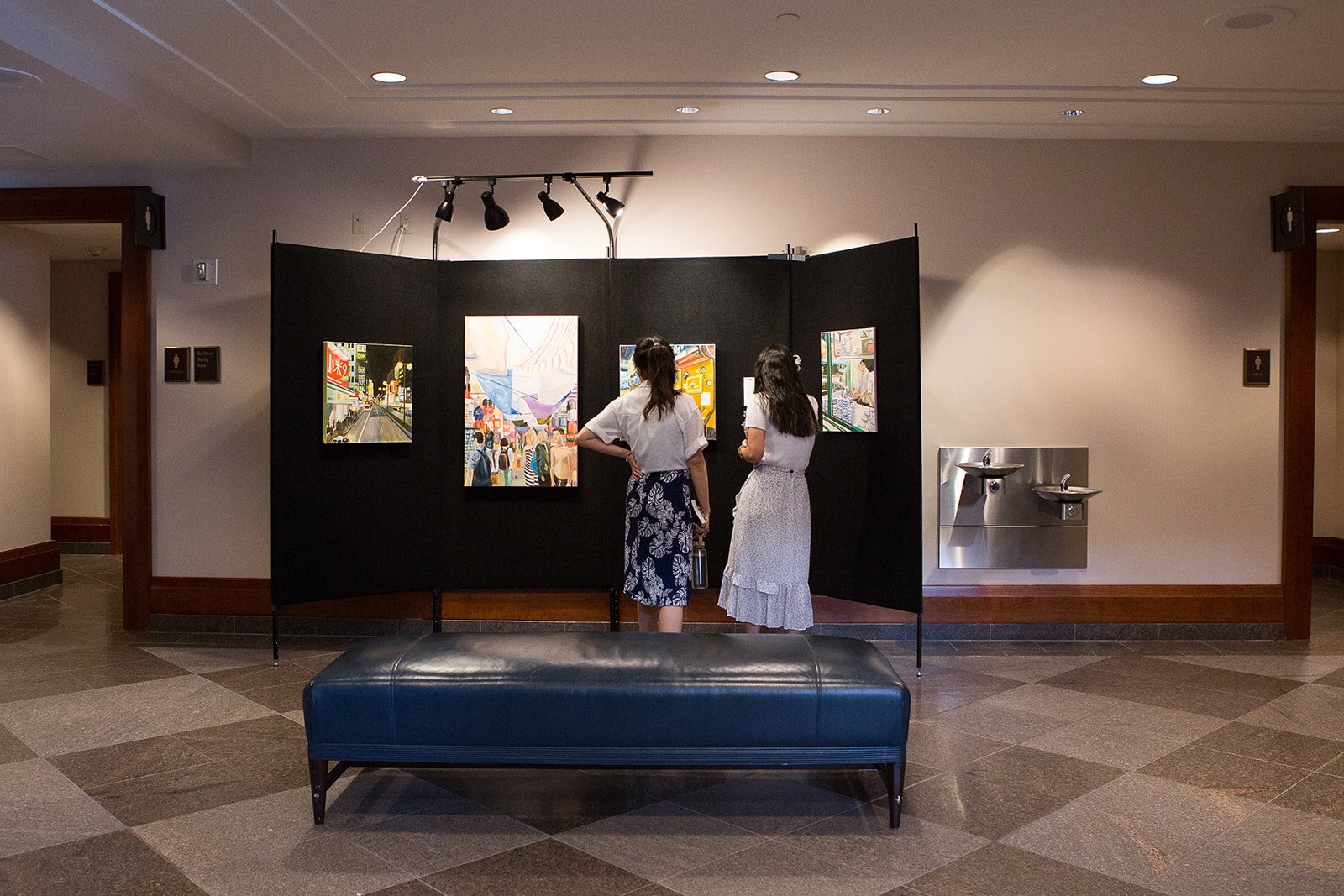

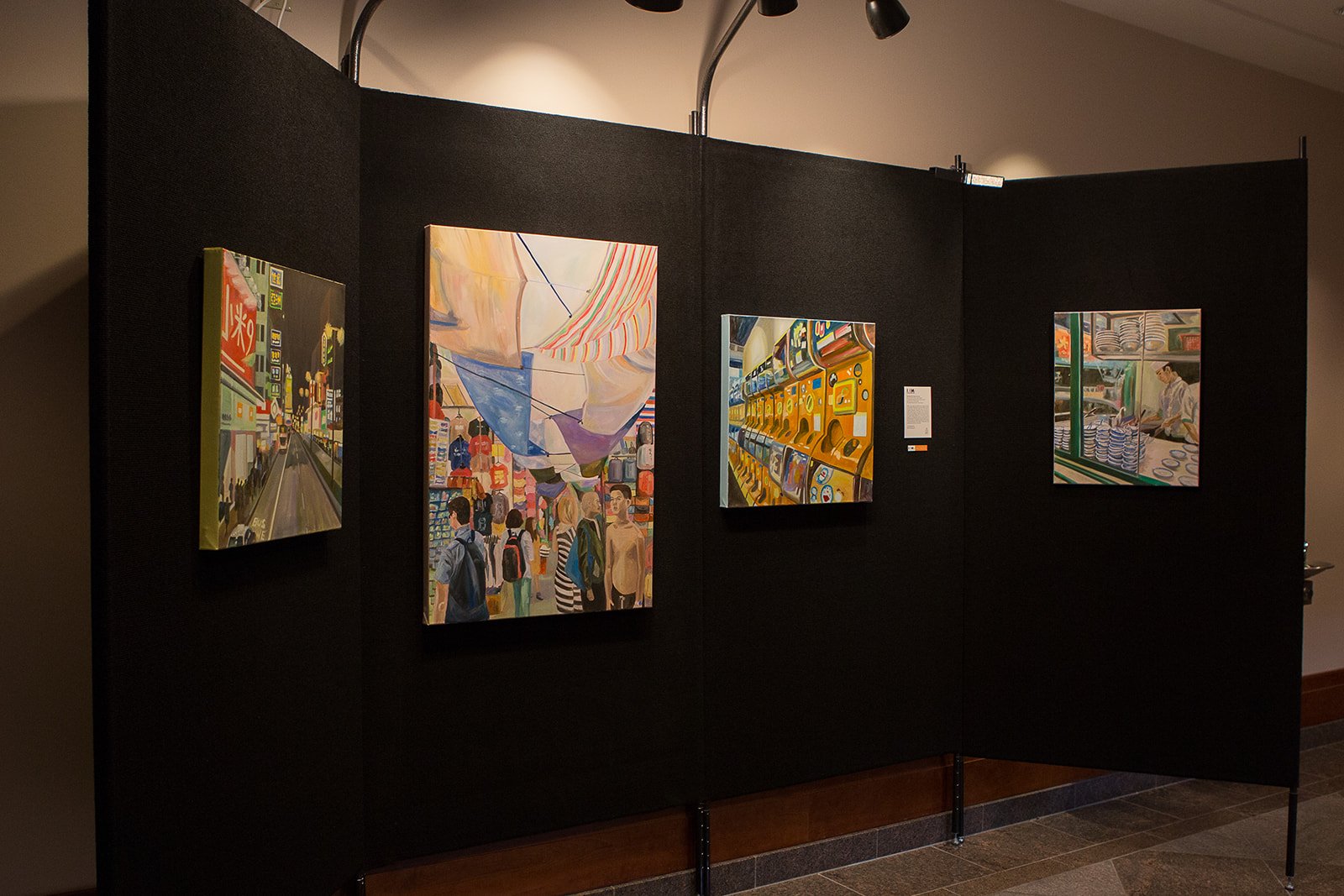
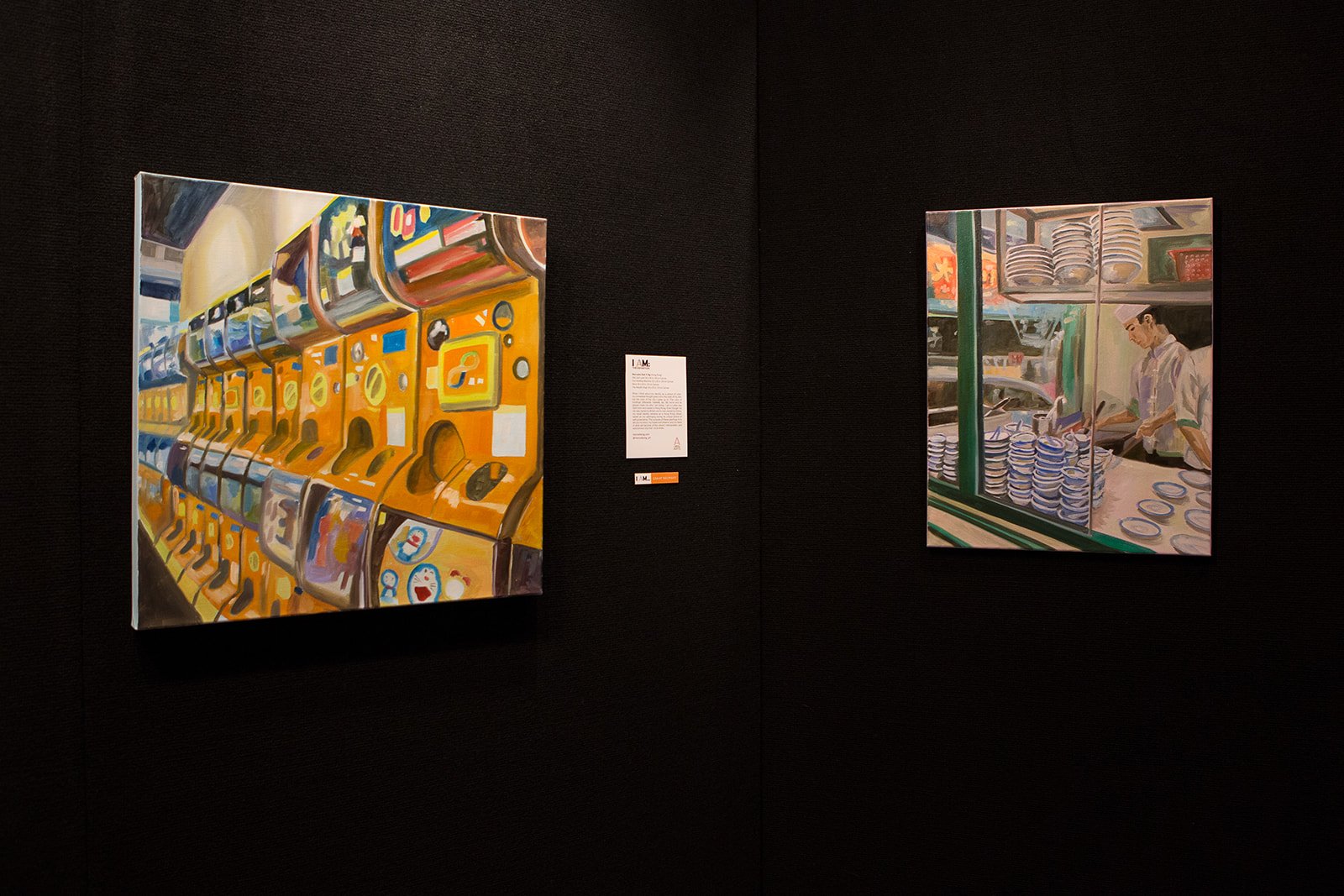

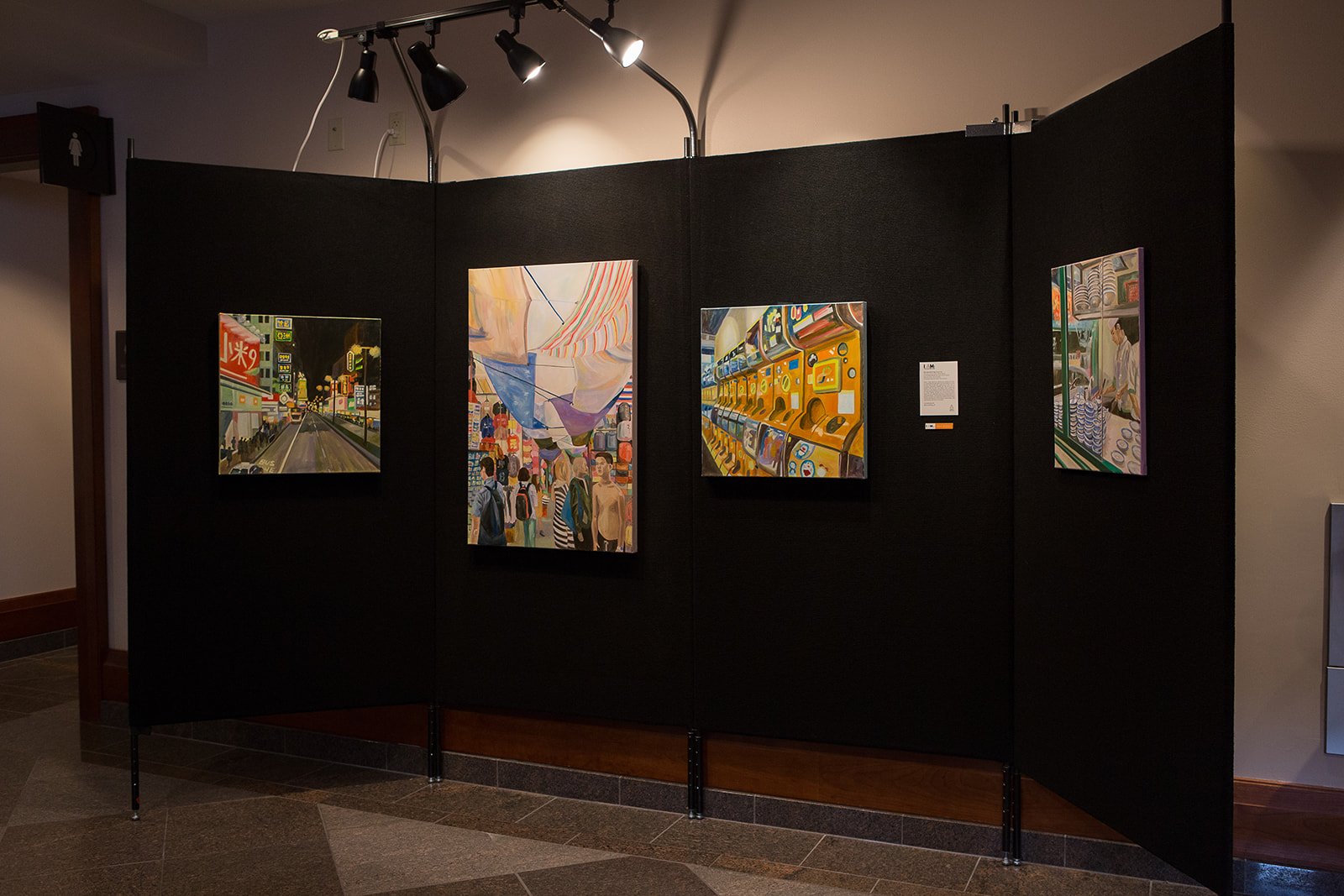
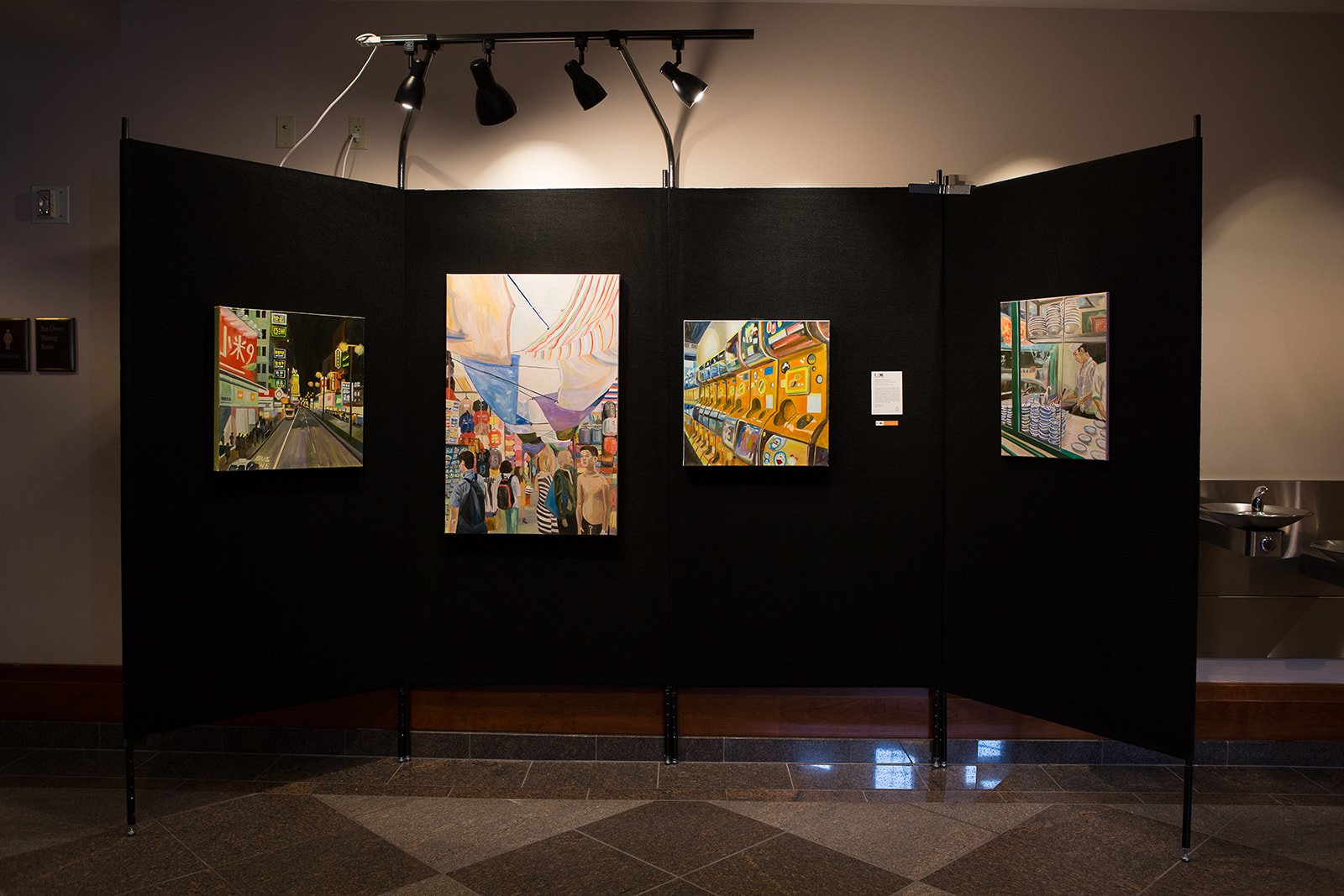
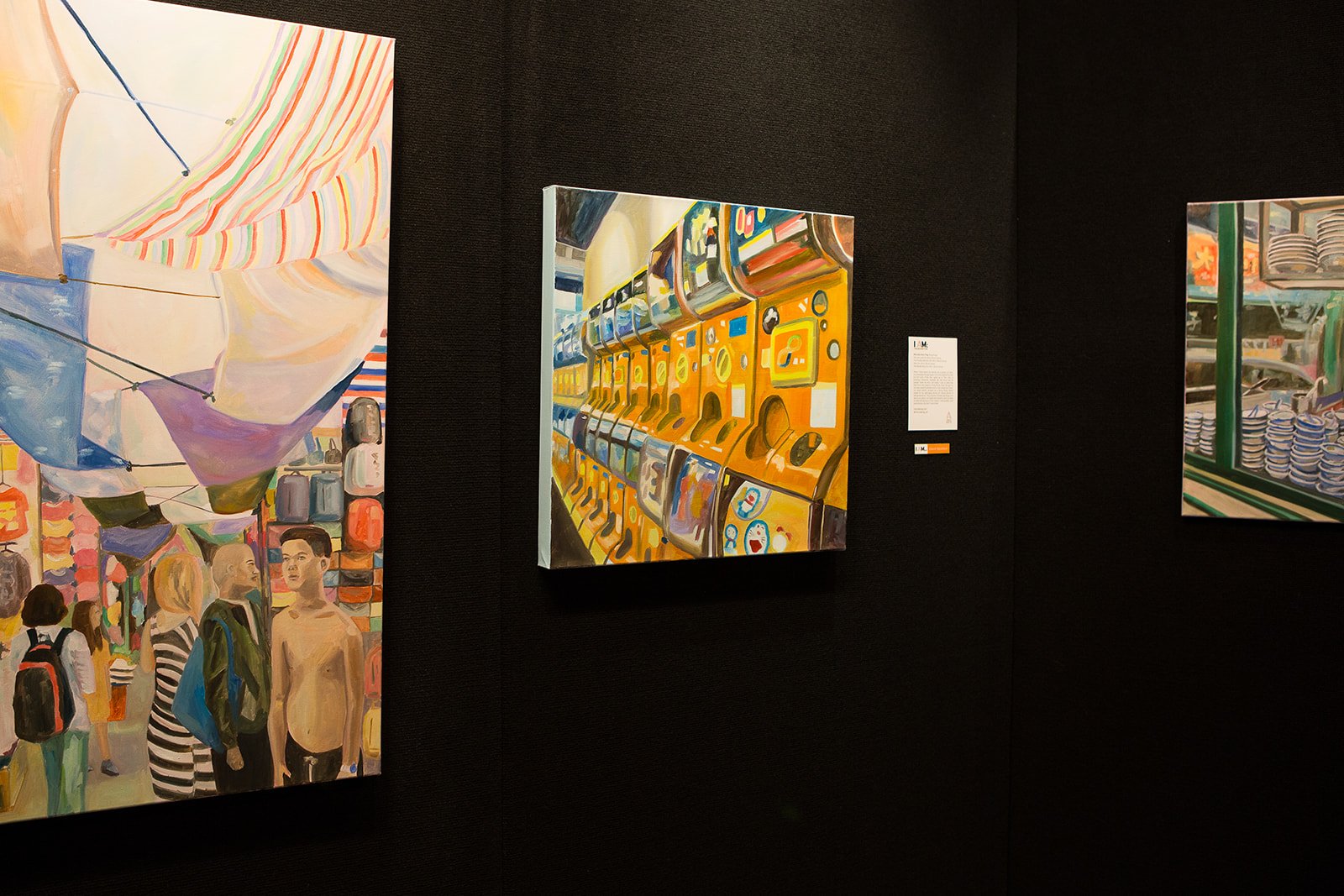
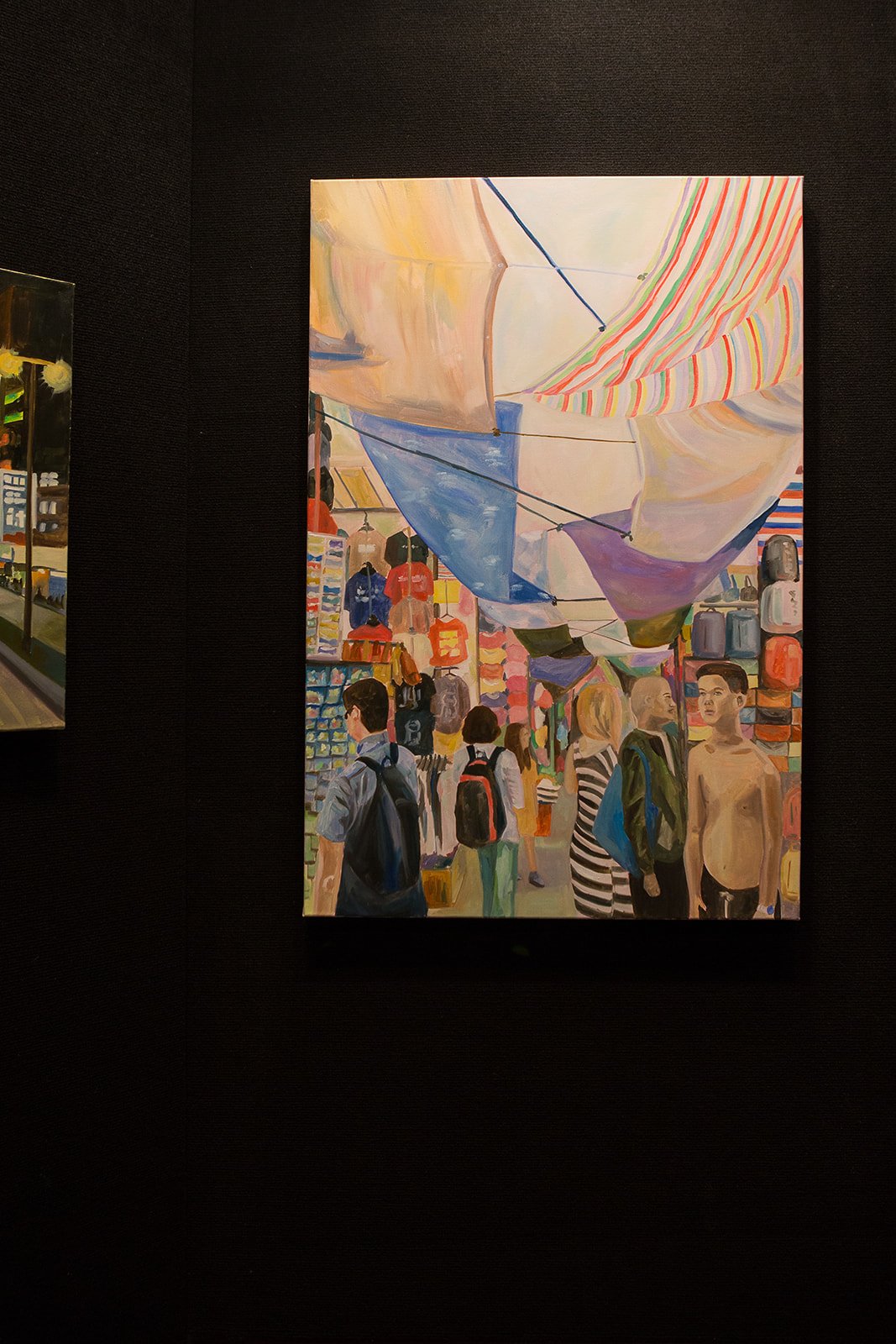

ARISAEL RIVERA (Puerto Rican - Taino Native - African - Spanish Conquistadors)
Trinity (2021)
Poem
TRINITY, wherein I will discuss the three things I believe define me. Where I come from, what I believe, and what I choose to create.
@arisael_riv
Arisael Rivera reads Trinity during I AM: The Journey in June, 2022.
CHRISANNE SERAFIN (Mexican-American)
We Claim Each Other (2022)
Digital Painting 21 x 34 in.
I AM DISCOVERING that I am a person of color; a white-assumed half Mexican American. I used to think I had no say about my racial identity, following the same pattern my immigrant ancestry believed was necessary in order to belong here. That pattern is to hide your race, assimilate as much as possible in order to survive. With this knowledge I have to decide to claim my heritage. I need my heritage to not only survive, but to thrive.
In this piece I have explored the idea of what it means to be claimed by my ancestors and to claim them in return.
@chrisanneserafin
We Claim Each Other (2022), Chrisanne Serafin
KALANI TONGA TUKUAFU (Tongan-Gotland, Sweden)
Ocean and Land (2022)
Acrylic on Canvas 28 x 11 in.
MY PIECE IS A PAIR OF PAINTINGS: one with traditional Scandinavian patterns around a Polynesian tortoise, and the other with Polynesian tribal designs as a background for a Swedish dala horse. These pieces together represent a cultural embodiment of who I am. Each pattern would be lovely on its own, but the added elements from such a vastly different culture change the piece and make it something completely new and unique that is no longer Scandinavian or Polynesian, but, instead, something entirely different built from pieces of each.
In my life, I have often felt like I am “not quite”...not quite Tongan enough for the Tongans, but definitely not quite palangi enough to pass for white. And it took me really until my late 30s to be able to look at myself and say, “not quite isn’t accurate. I am BOTH and NEITHER simultaneously, which is actually quite extraordinary. I am ocean and I am land. I am horse and I am tortoise. I am Tongan AND I am Swedish. It’s not a deficiency, it’s a gift.
@kalanitonga.designs
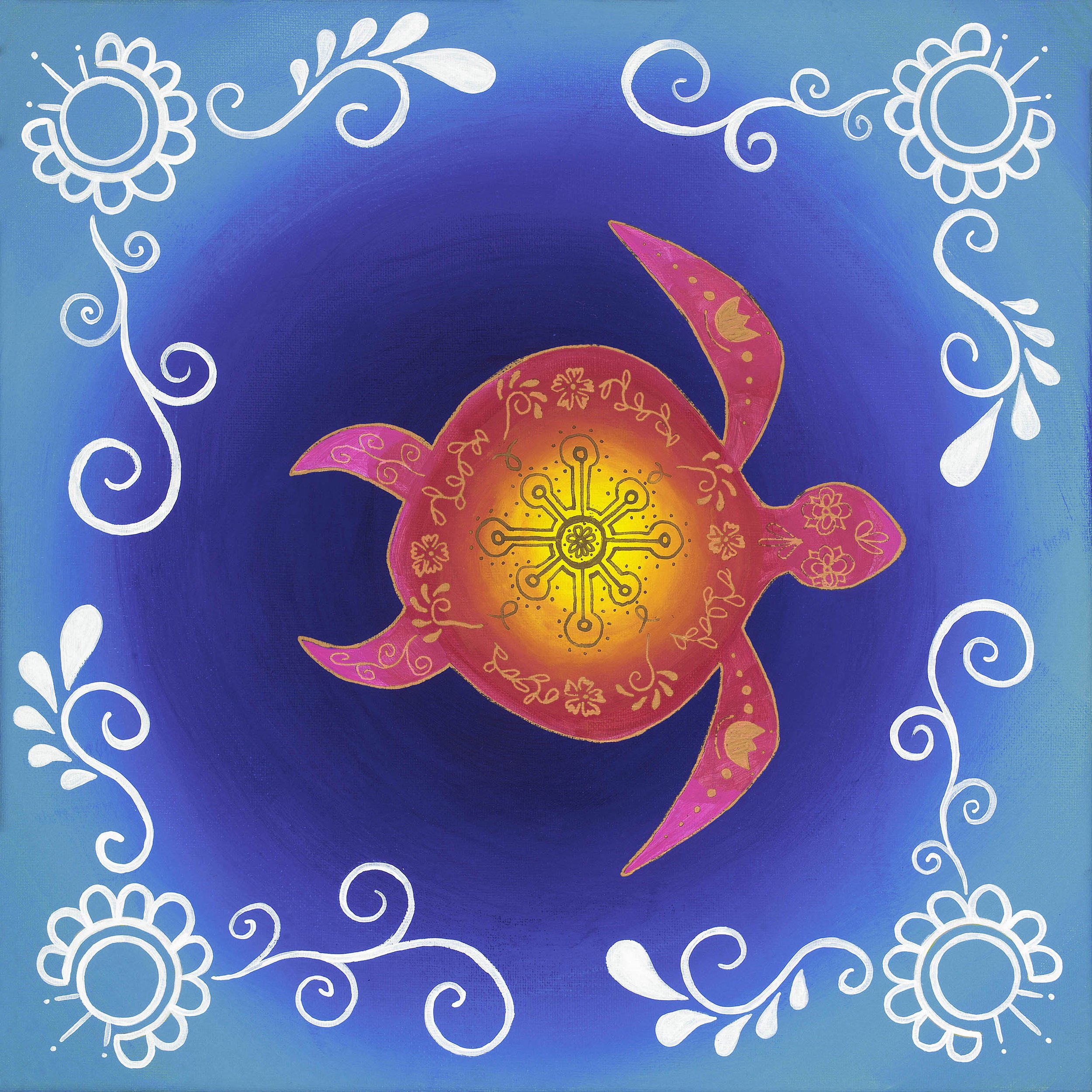
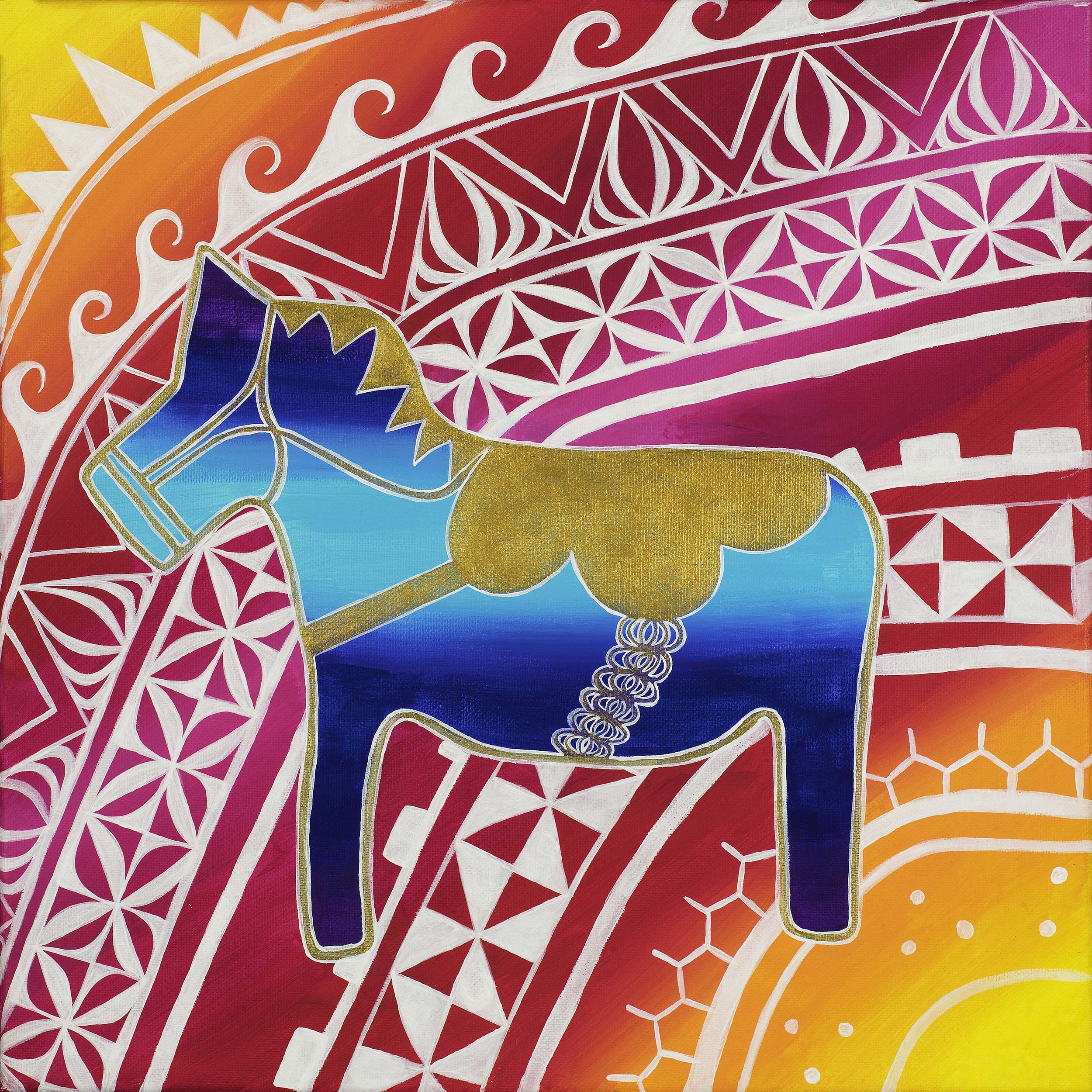

SMITH TUMBA (DR-Congo)
A TALENTED Congolese composer, musician and artist, Smith may be familiar to Center for Latter-day Saint Arts audiences for his rendition of “The Spirit of God” that was shared widely on our virtual channels. He has composed and been featured throughout the DRC for his musical gifts. Smith has a Masters degree from the Université d'Alger.
Smith Tumba is a recognized composer in the Democratic Republic of the Congo.
TYRONE WHITEHORSE (Diné (Navajo))
Navajo Peace and Harmony
Acrylic and Gold Foil on Wood 36 in.
THIS PIECE IS INSPIRED BY Navajo teachings that harmonize with the Gospel of Jesus Christ. The Navajo homeland resides between 4 sacred mountains, represented by their sacred colors of white, blue, yellow, and black. These mountains are where Deity and man can commune, they are holy places on earth. This painting is circular in representation of the traditional Navajo home, the hoghan.
When one enters a hoghan every person enters from the east, and proceeds to the south, west, and then north before they can continue on with their activities. This signifies the life cycle of each 5 Fingered Being (human) who lives on Mother Earth.
The painting begins at Sisnaajiní (Mount Blanca), the White sacred mountain, and as we proceed around the painting we encounter the home, signifying where life begins. The Navajo home is a sacred place, a strong hold against the harsh elements, a place where every child learns the importance of life and what brings happiness. As we continue to the south, we encounter sheep, the main livestock of the Navajo. Sheep bring us life, lessons, abundance, clothing, food, and prosperity. Sheep represent work that brings peace and harmony to the lives of all those who care for them.
Continuing past Tsoodził (Mount Taylor), the Blue sacred mountain of the south. We then come to the family unit where happiness in life is found. To the Navajo wealth is not measured by how many flocks a person has, or how much turquoise or silver one owns, nor by one's job; true wealth to the Navajo is family. As we continue we come across a rain cloud with male rain. Rain in Navajo philosophy is a representation of the blessings that God sends us. In the desert, all rain is a welcomed blessing and the Navajo recognize that rain comes from the heavens.
We continue to Dook’o’oosłííd (San Francisco Peaks), the yellow sacred mountain to the west. We continue to find the family engaged in industry. Weaving is one of the blessings that sheep have given the Navajo and we have woven blankets for clothing and trade. Horses are another sacred animal with whom the Navajo have made a partnership for the prosperity of the family.
We continue to Dibé Nitsaa (Mount Hesprus), the Black sacred mountain of the north. From there we continue to female rain, a more abundant, powerful rain representing again the grandest blessings from Heaven. We end with the sight of prayer. Every morning and night the Navajo have been instructed to pray, sprinkling an offering of corn pollen to God to thank God for blessings and sue blessings for our loved ones.
In the middle of the painting we find a couple, representing God, Heavenly Father and Heavenly Mother together. They are the source of all happiness. They are wrapped in a Chief's design blanket reserved only for the head people of the tribe signifying their authority. They have in front of them the sacred Navajo wedding basket.
When a couple is married they are given this basket with instructions that it is a guide for life. The basket is in a spiral design and begins in a lighter area. As one follows along the spiral, representing life's journey, one encounters dark areas which represent dark times that come in every 5 Fingered Being's life. In life one must go through these times. Sometimes they are short, sometimes they are long. But with each revolution we have access to the light of God, the Light of Christ that allows us to pass through these times and come out for the better.
As one continues through life Navajo teachings indicate that family is most important and in the basket family is represented by the red bands. It represents the mixing of people’s blood for the propagation of the family, the clan, the tribe, the People. This union, in the painting, has the blessing of God as the couple is encompassed by the sun symbol, the symbol for the Holy People, our Heavenly Father and Heavenly Mother.
Clans: Many Goats & White Corn Woman by the Edge of the Water People (2022)
Digital Artwork, 12 x 18 in
Navajo people have four clans that we identify ourselves by. We have our clan, which we get from our mother. We are born for our father's clan. We then state our paternal grandfather and maternal grandfather's clan. This is how we are Navajo people. I am Many Goats, born for the White Corn Woman by the Edge of the Water People. My maternal grandfather is One Who Walks Around, and my paternal grandfather is Bitter Water. This is how I am a Navajo man.
White Horse (2022)
Digital Artwork, 12 x 18 in
I AM a Whitehorse. My name is the english translation from my great-great grandfather Haastiin Łįį' Łigai (Whitehorse Man). This painting is a representation of my Whitehorse family.
Sodizin (Prayer) (2022)
Digital Artwork, 12 x 18 in
Navajo traditional practice is that we are to rise before the sun and greet the rising sun with our morning prayers. The sun is a symbol for the Creator. It gives life and shines down blessings upon us. Each morning prayer is met with an offering of corn pollen, a symbol of gratitude for the blessings we receive. Prayer is in everyday practice.
@WhitehorseArts
Pictured below: Tyrone Whitehorse’s work is exhibited at I AM in Salt Lake City in June, 2022.

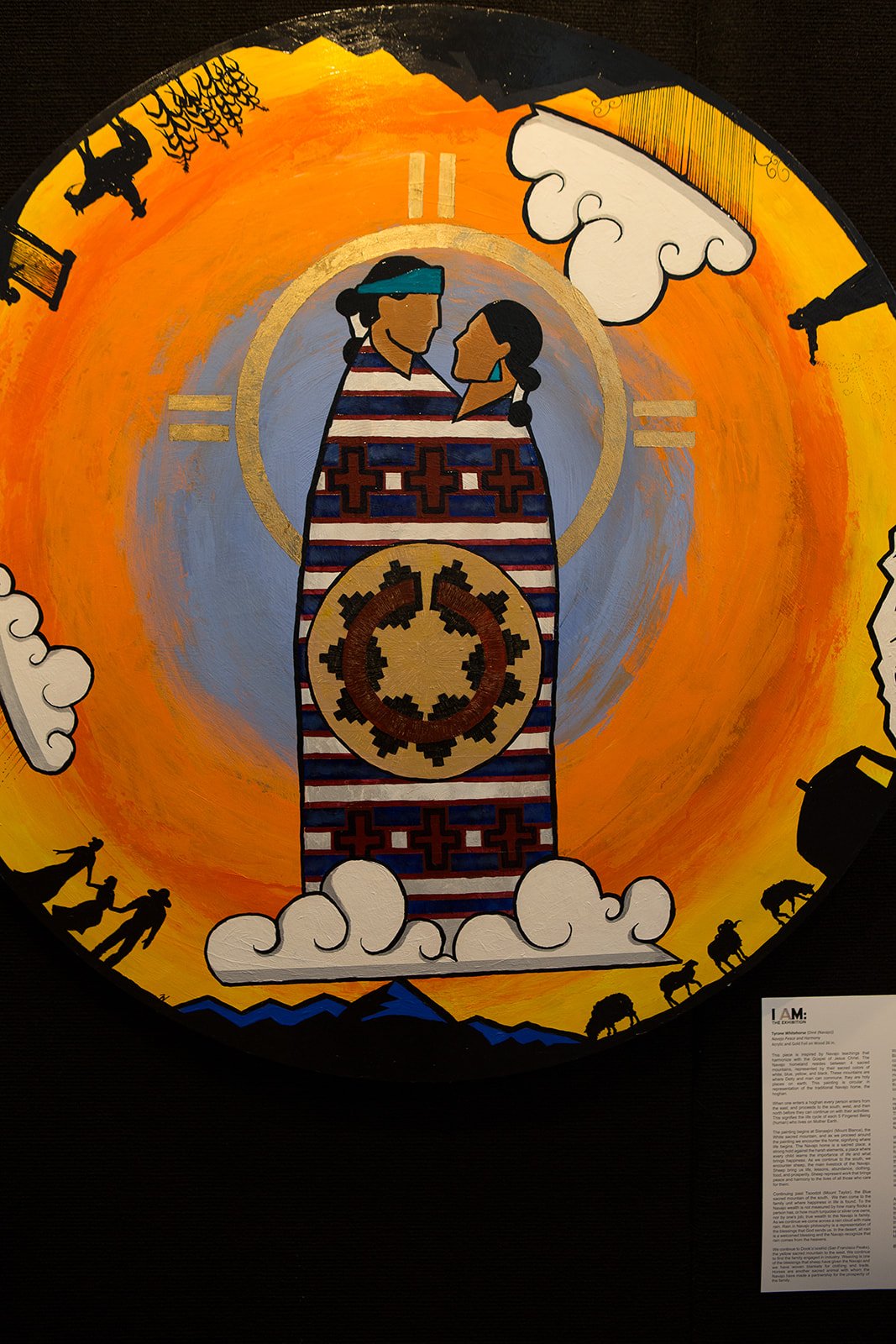
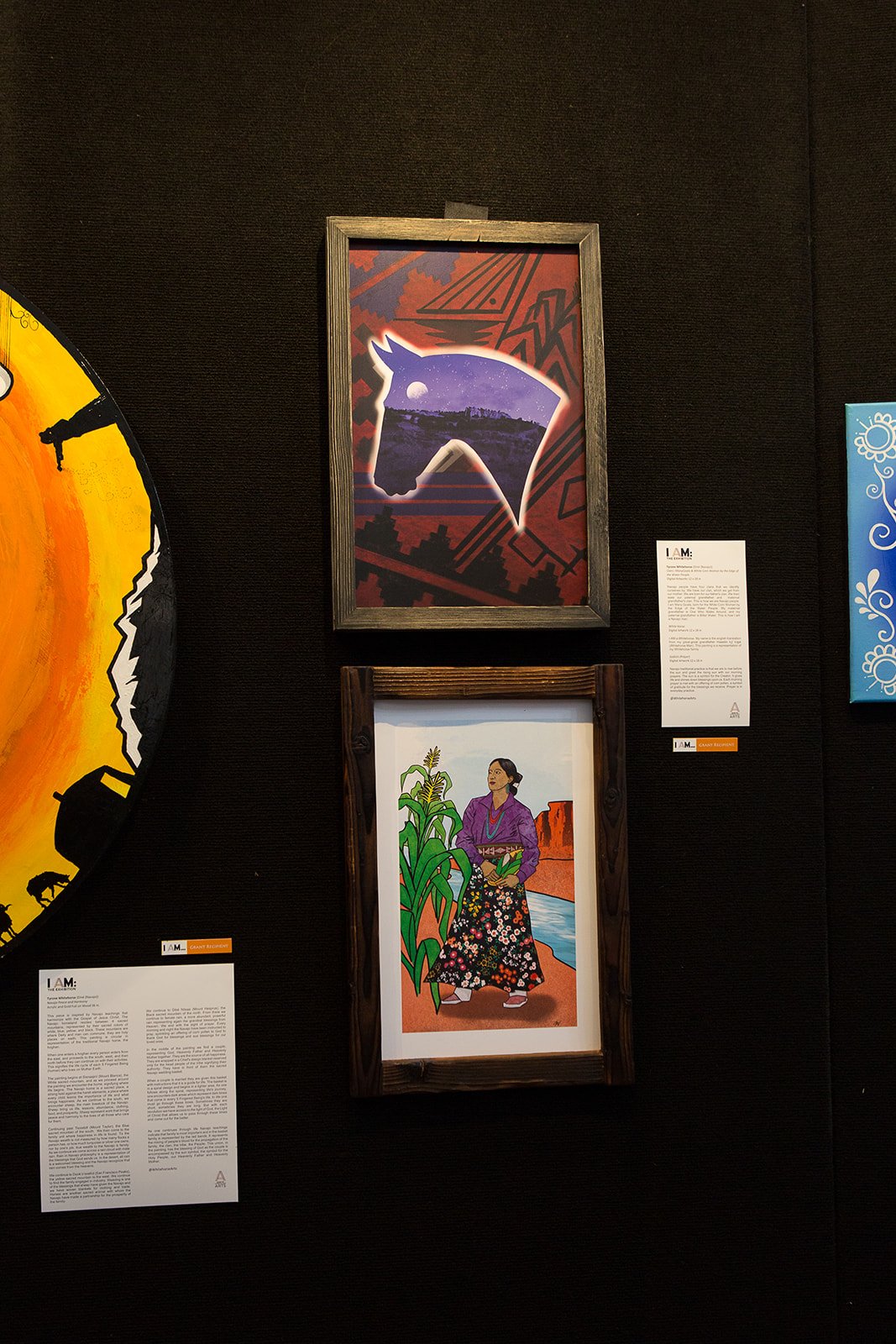

Want more I AM?
Join I AM: The Journey and see more videos, photos and footage from the many artists who gathered together at the Salt Lake City Conference Center Theater on June 18, 2022.
The cast of I AM: The Journey at the Conference Center Theater, June 18, 2022.
Acknowledgements
I AM: The Exhibition is curated by Kwani Povi Winder and sponsored by Deseret Book and Allyson and Dan Chard.
A special thanks to our community production partners– KsL, BYUtv, and the Conference Center– who are likewise devoted in sharing the more global story of the Latter-day Saints.








